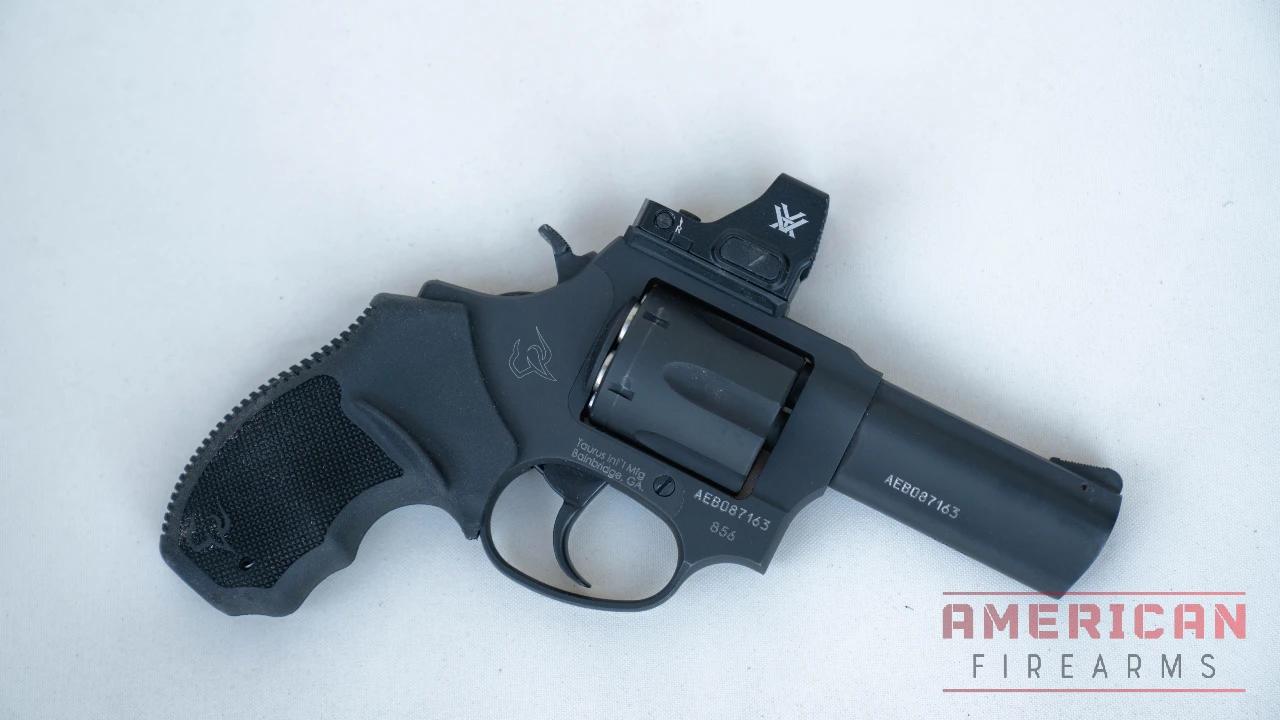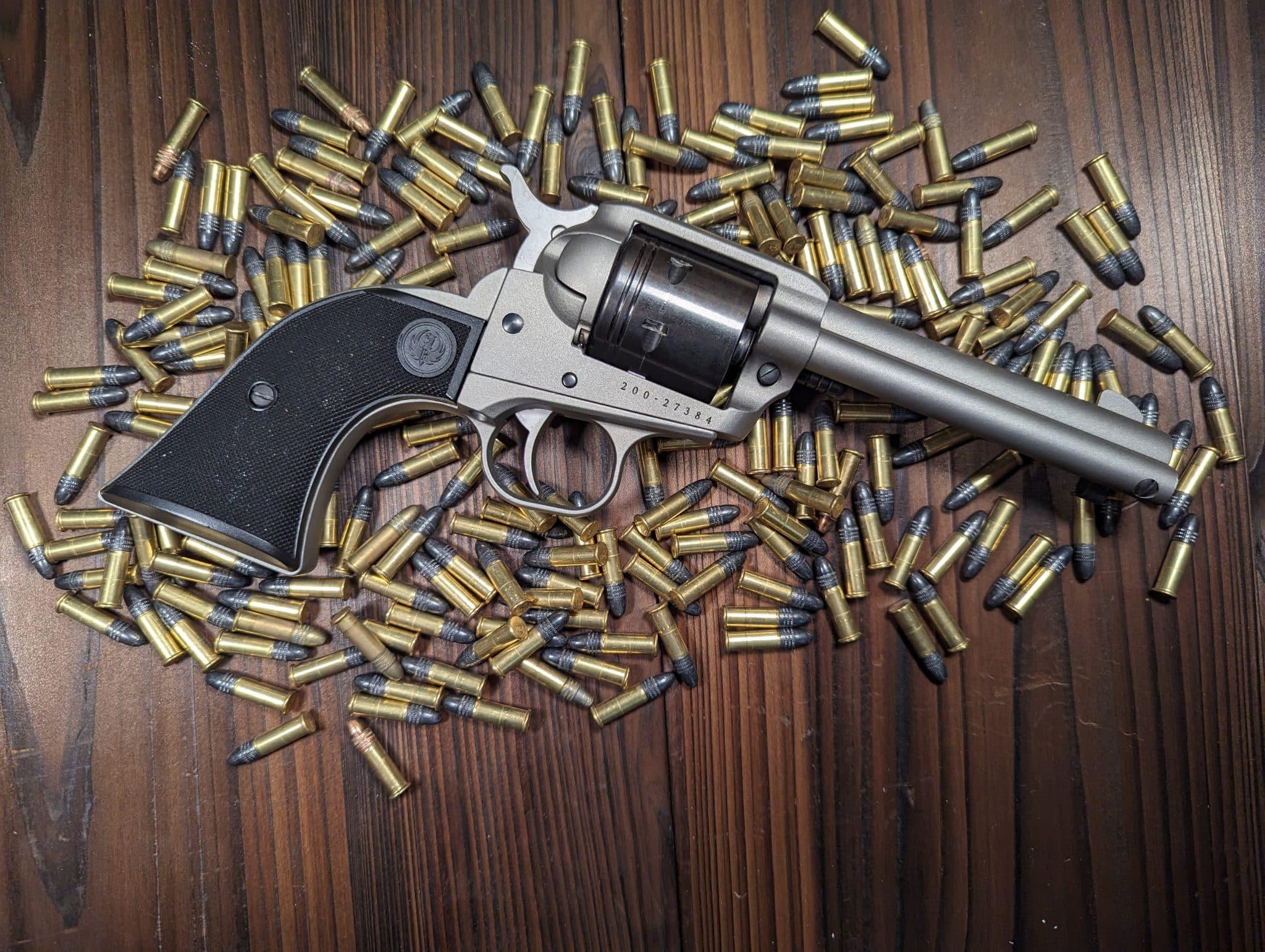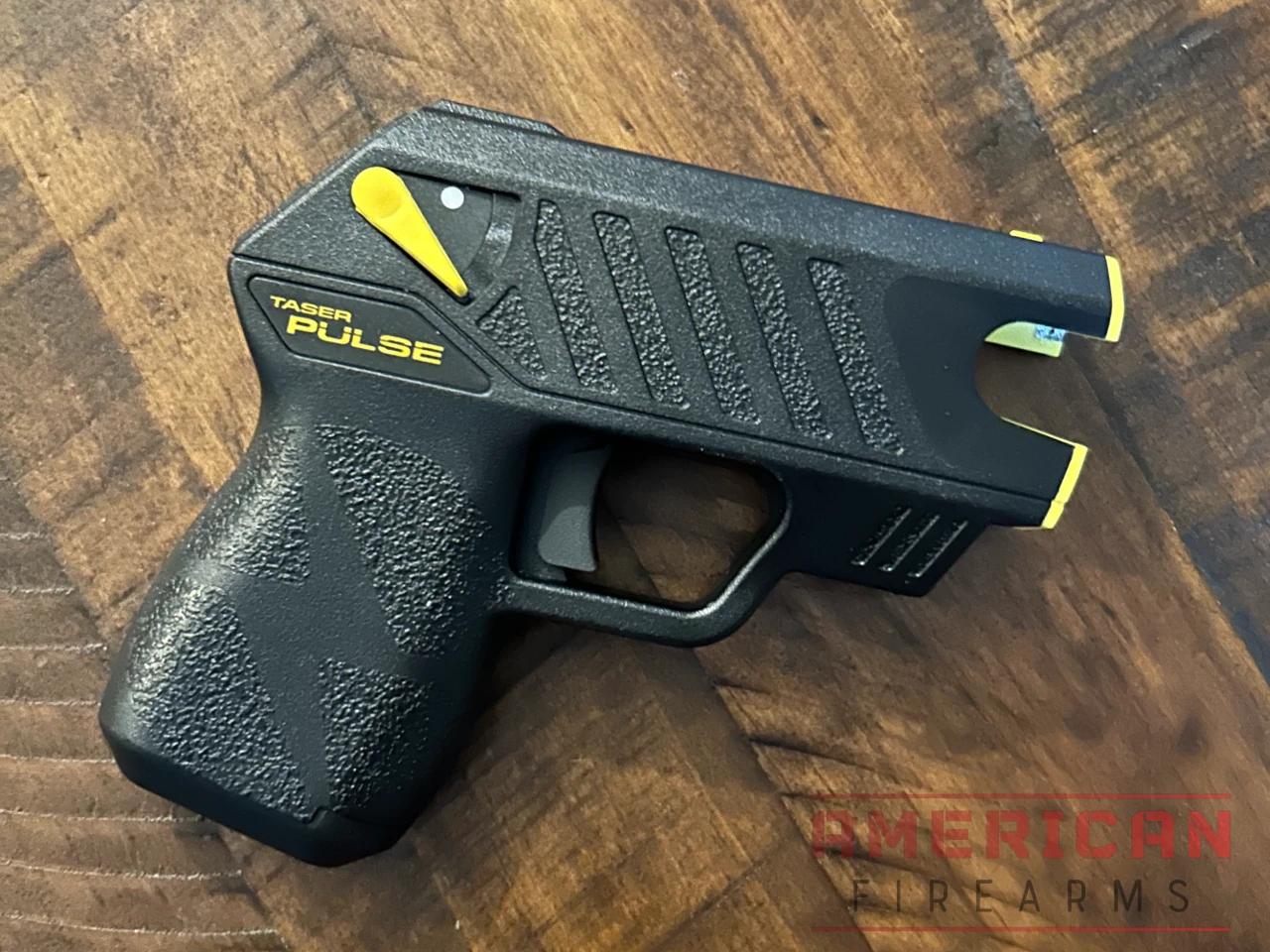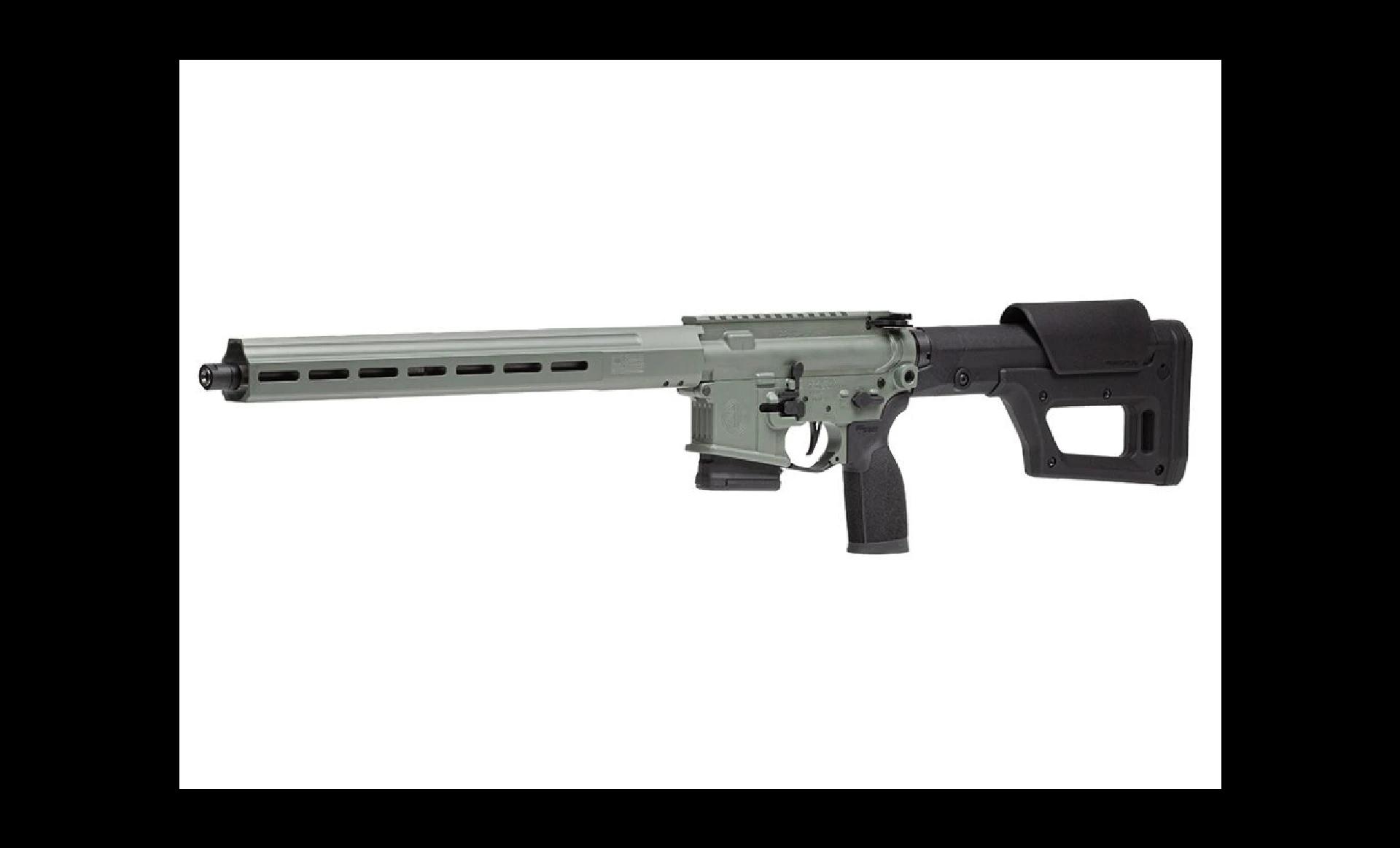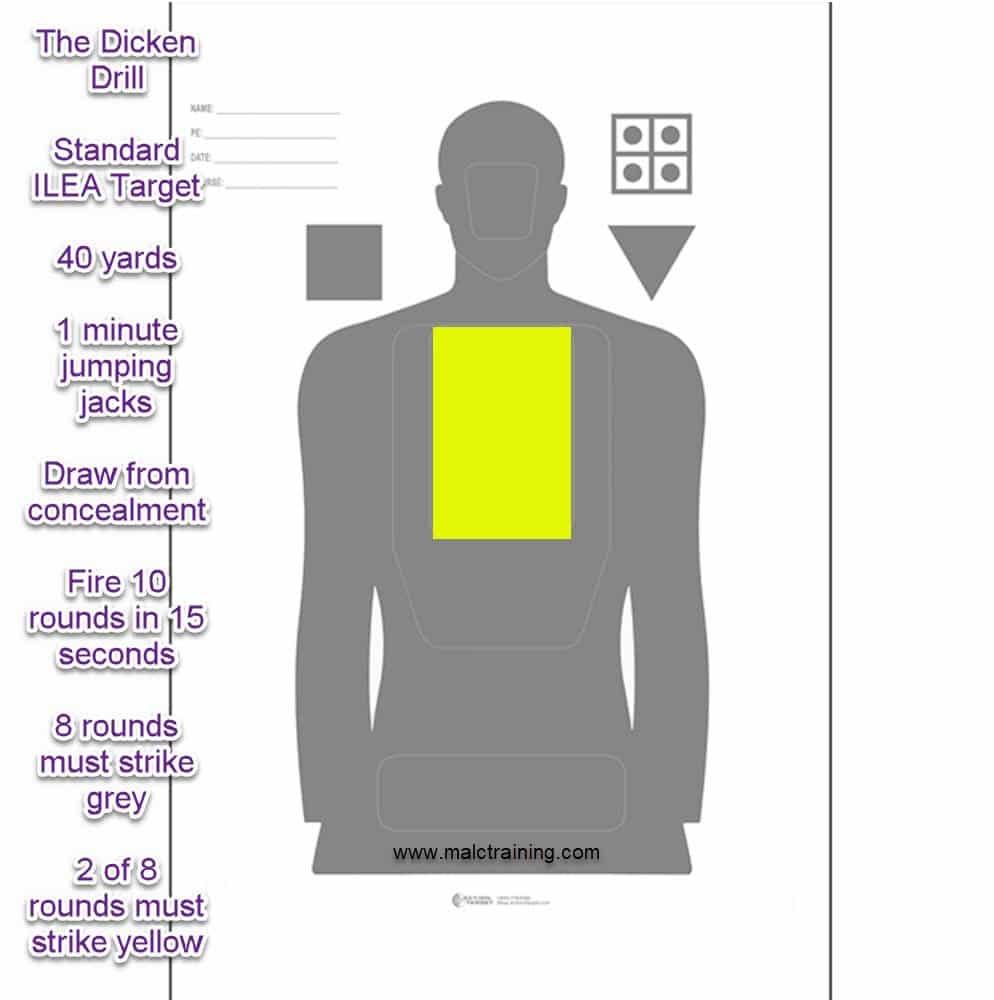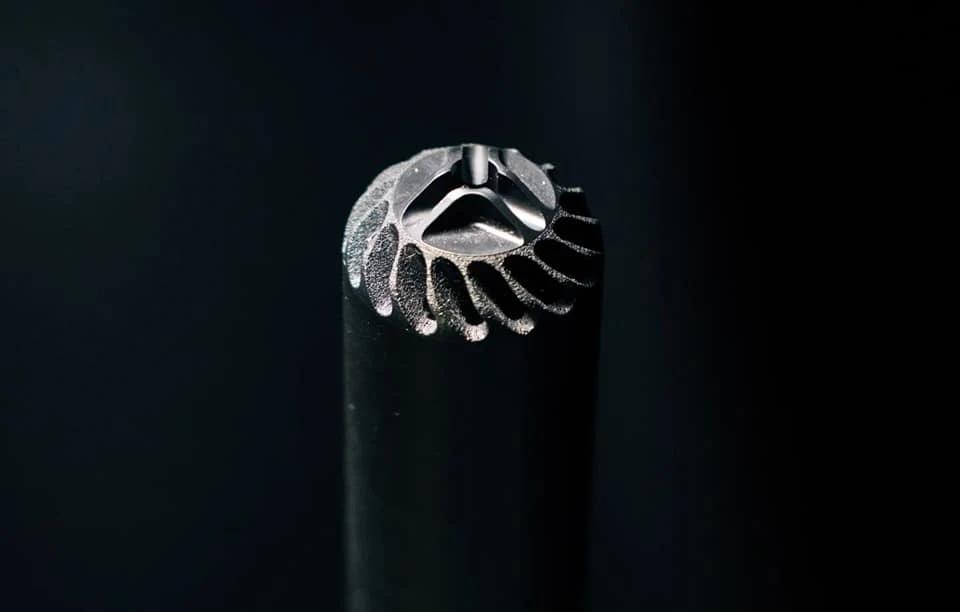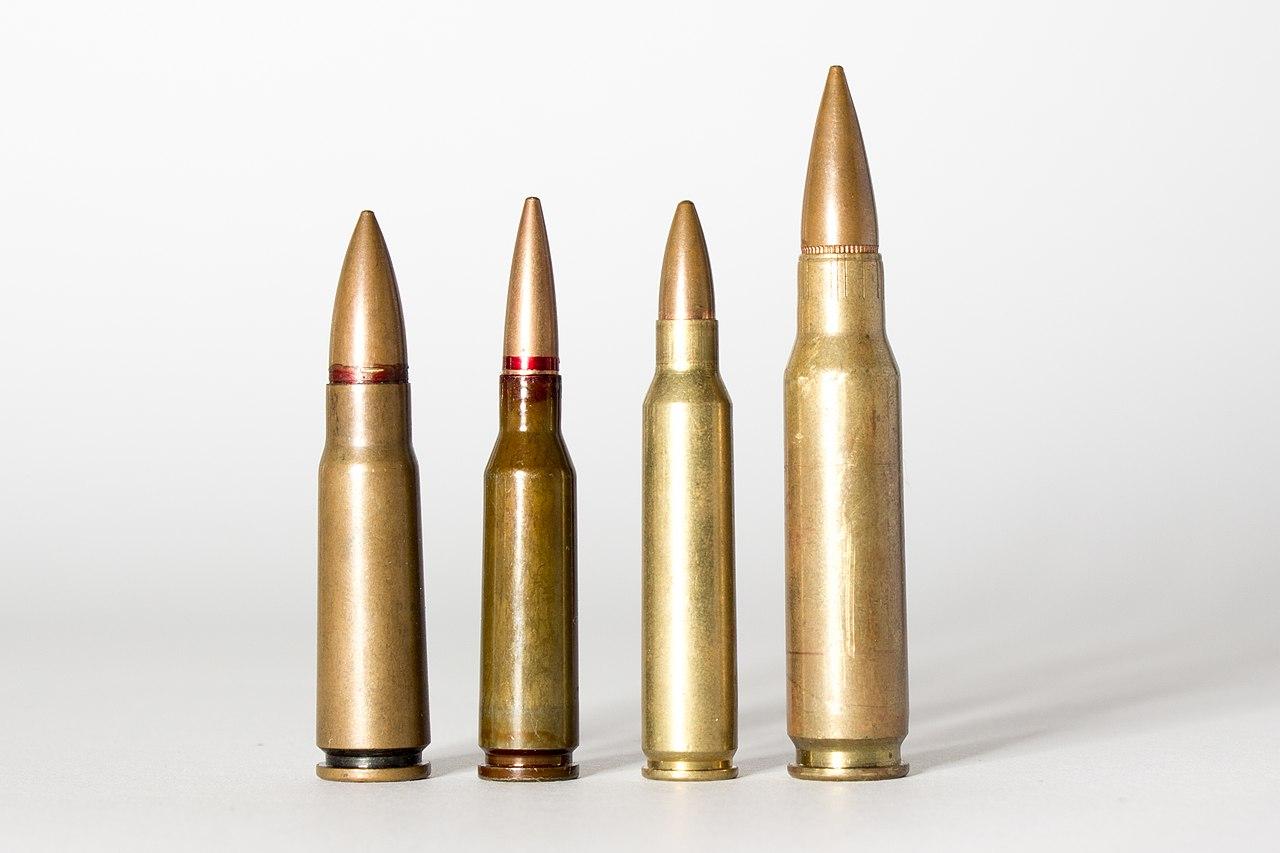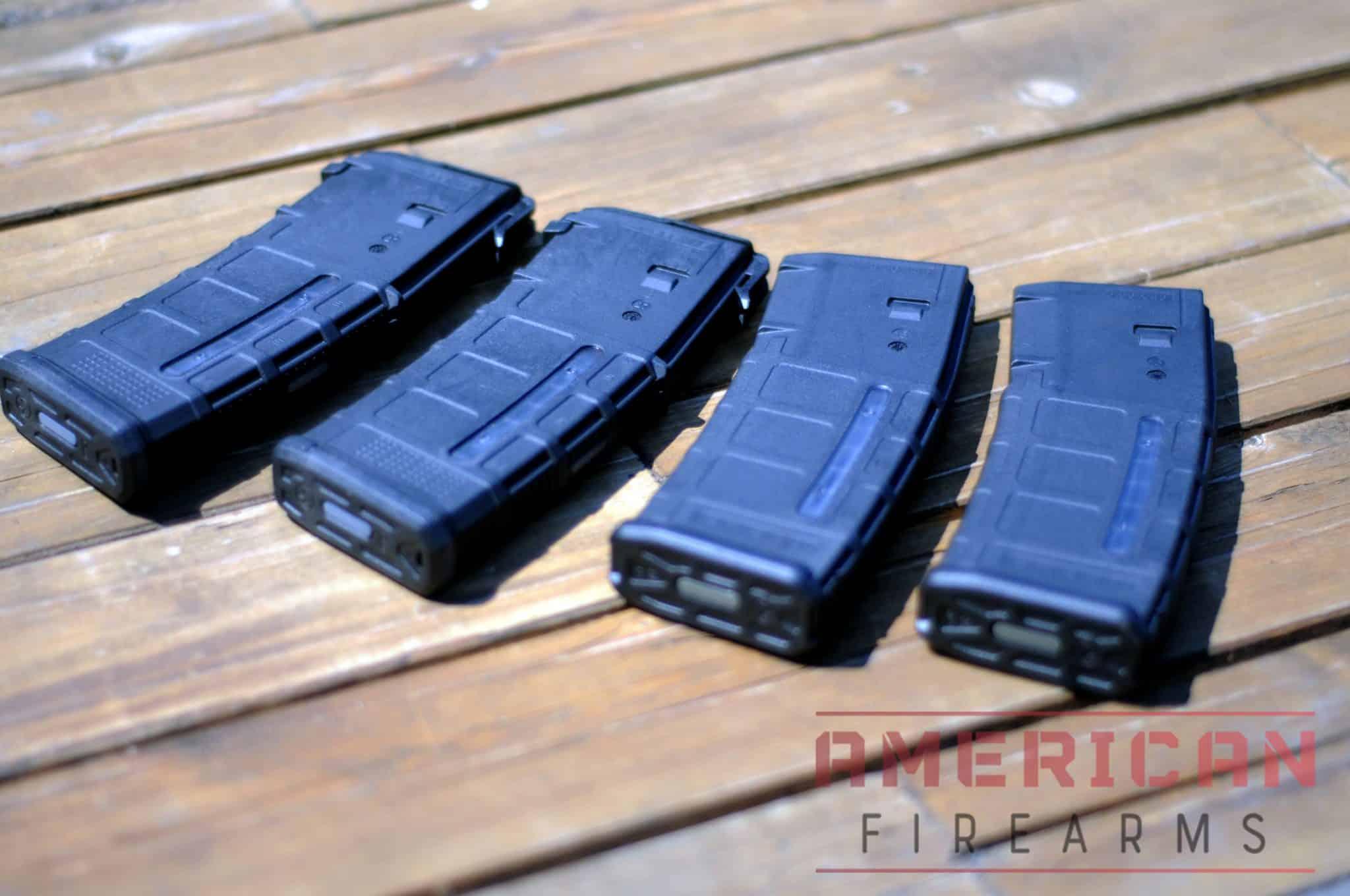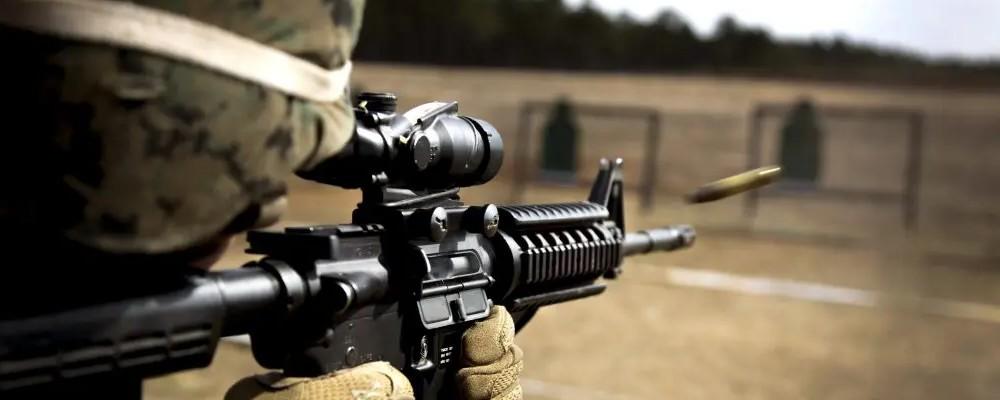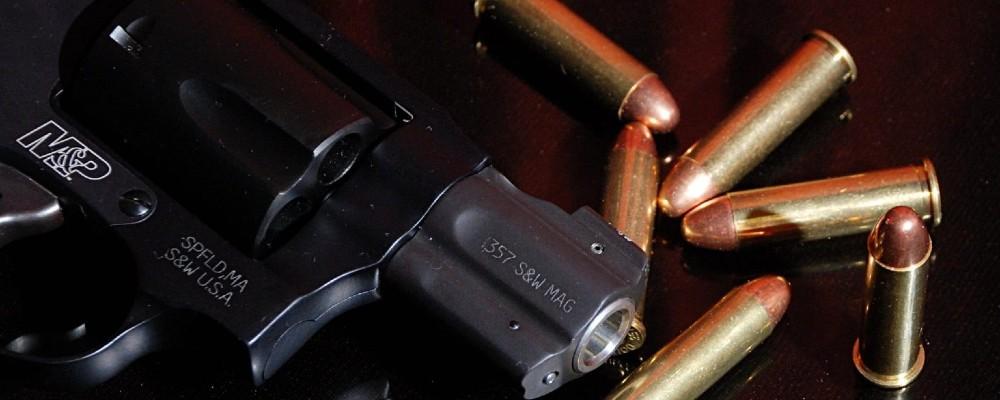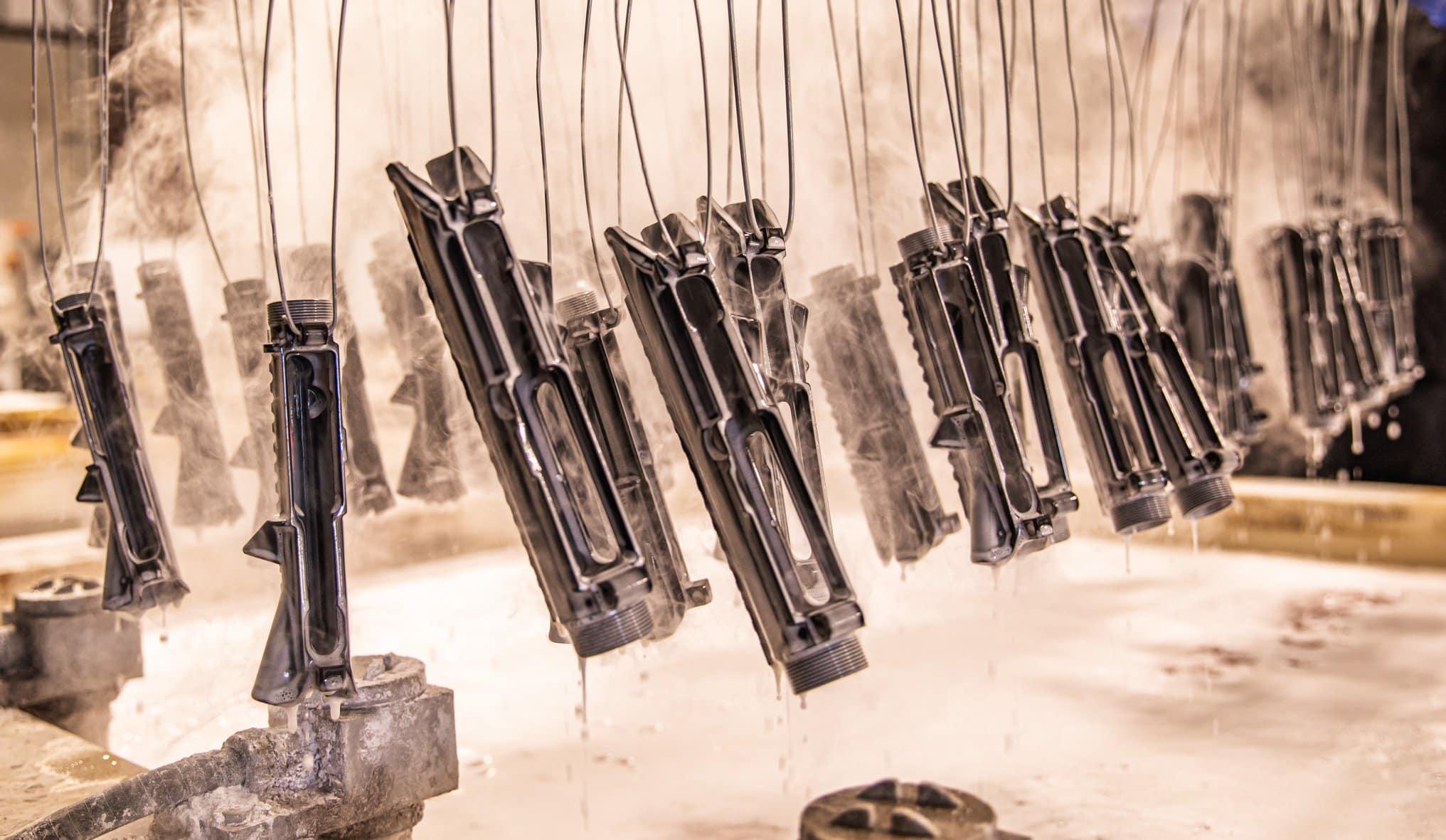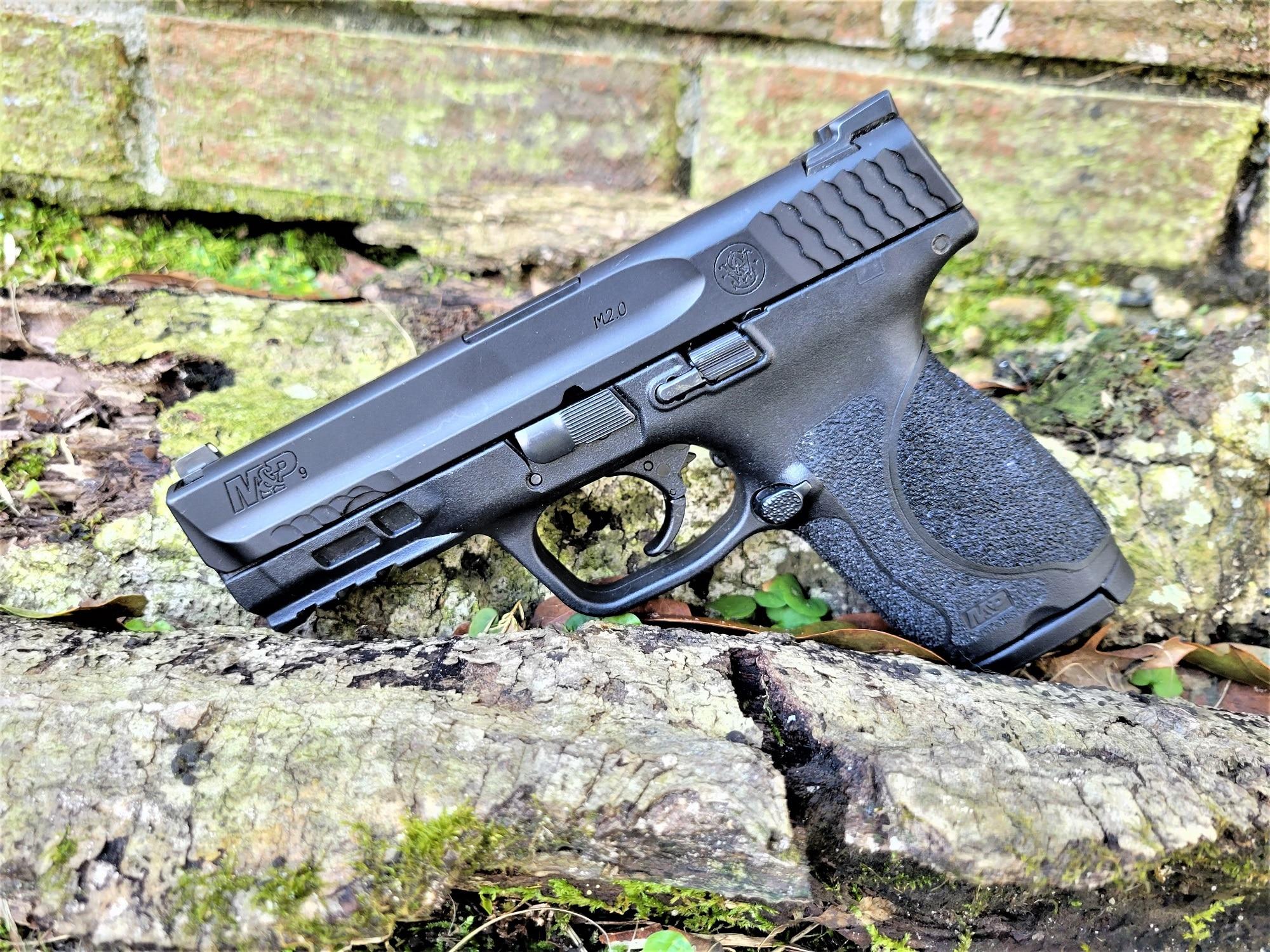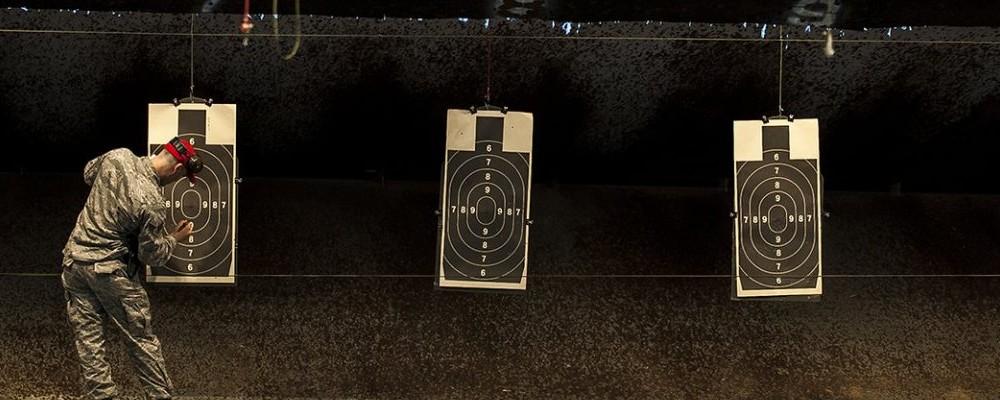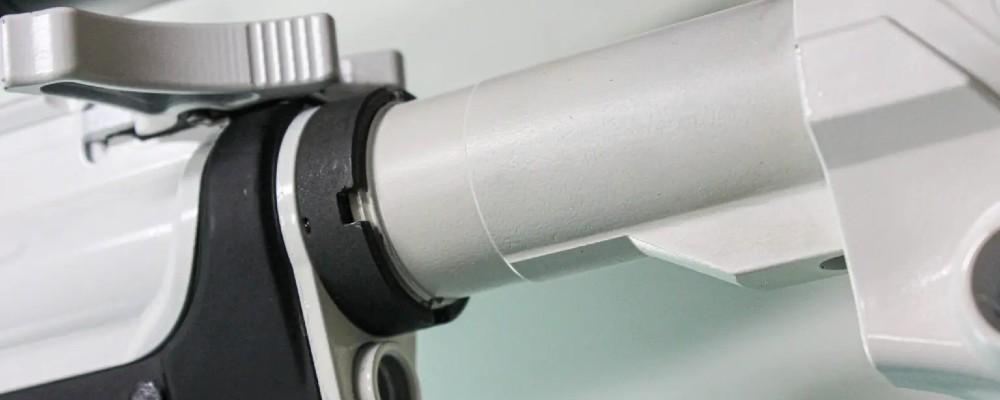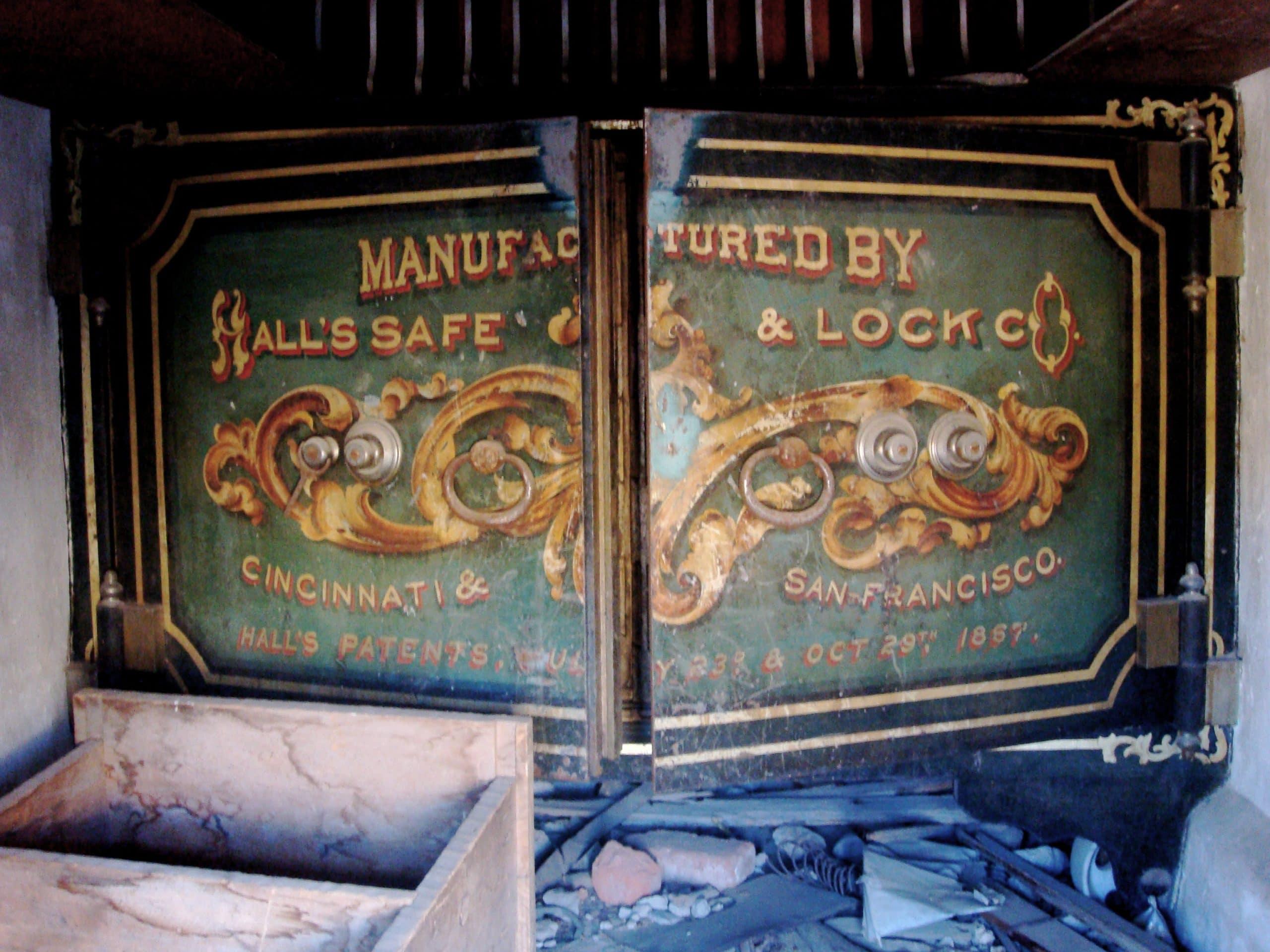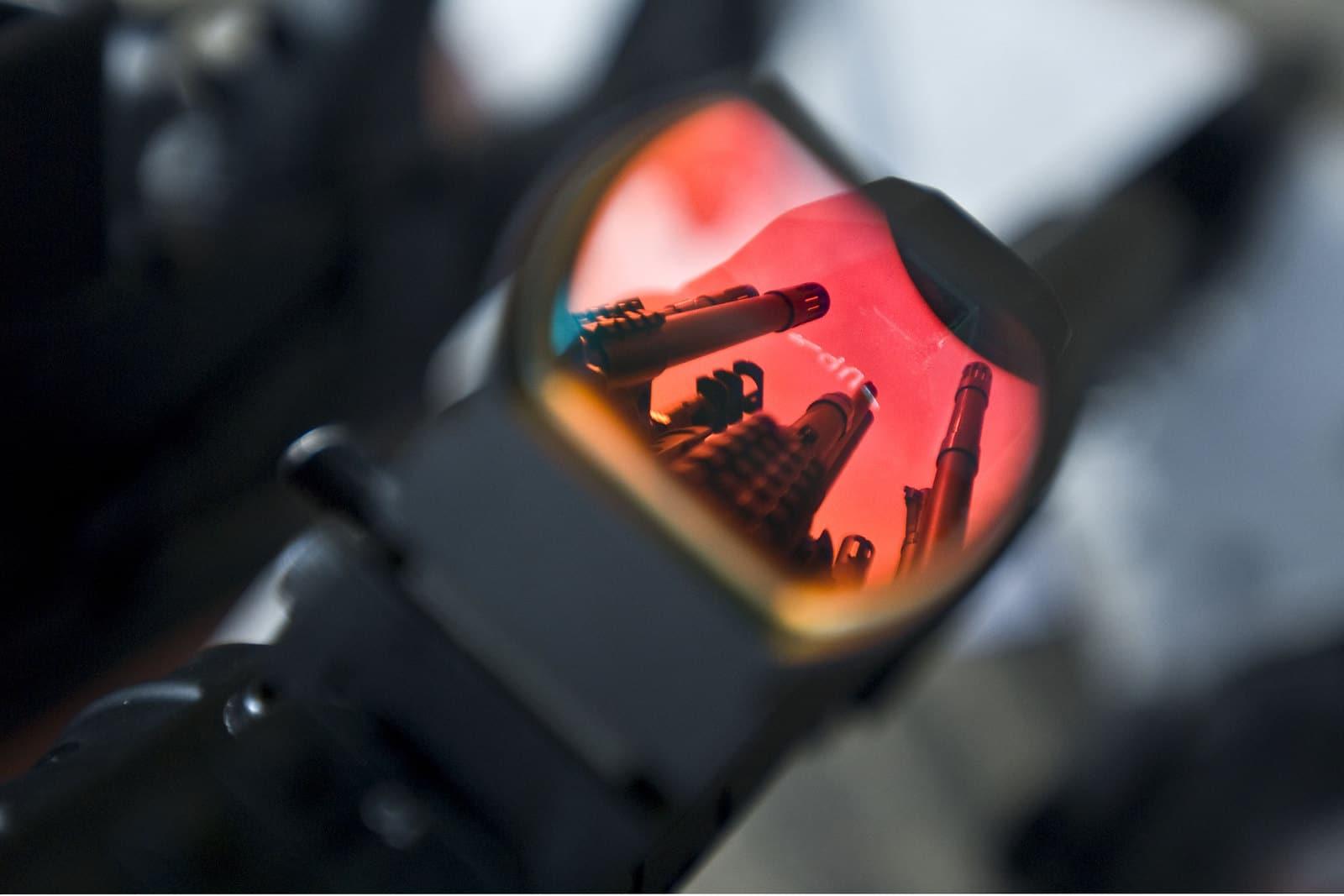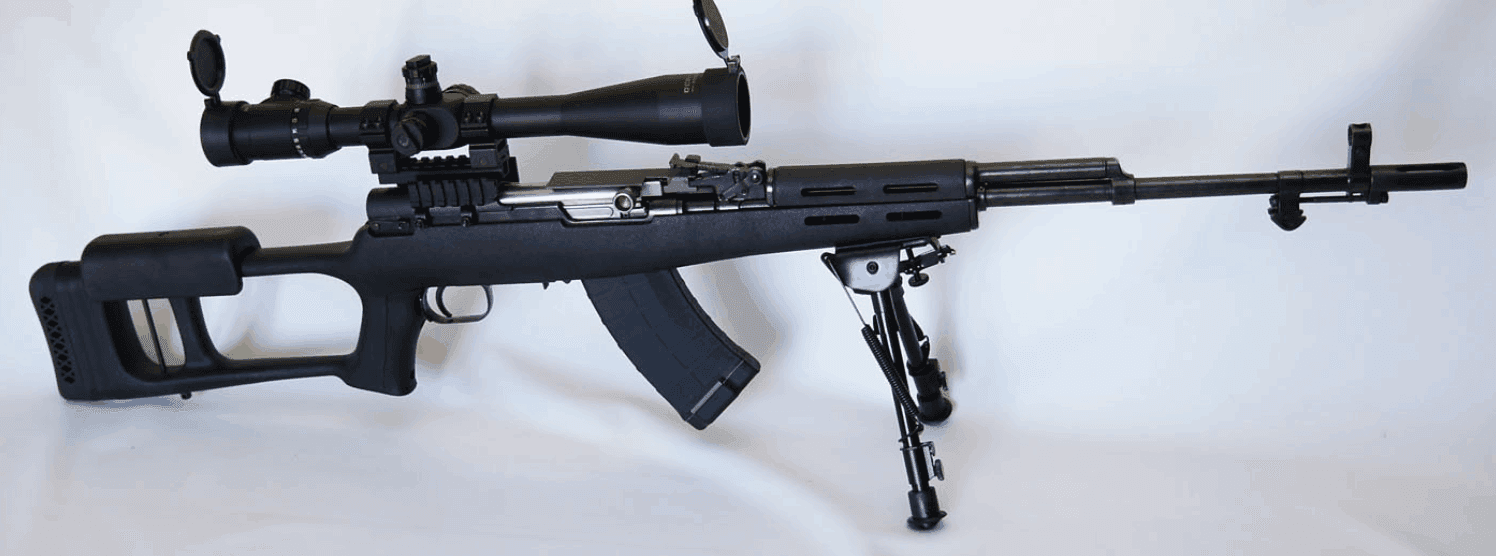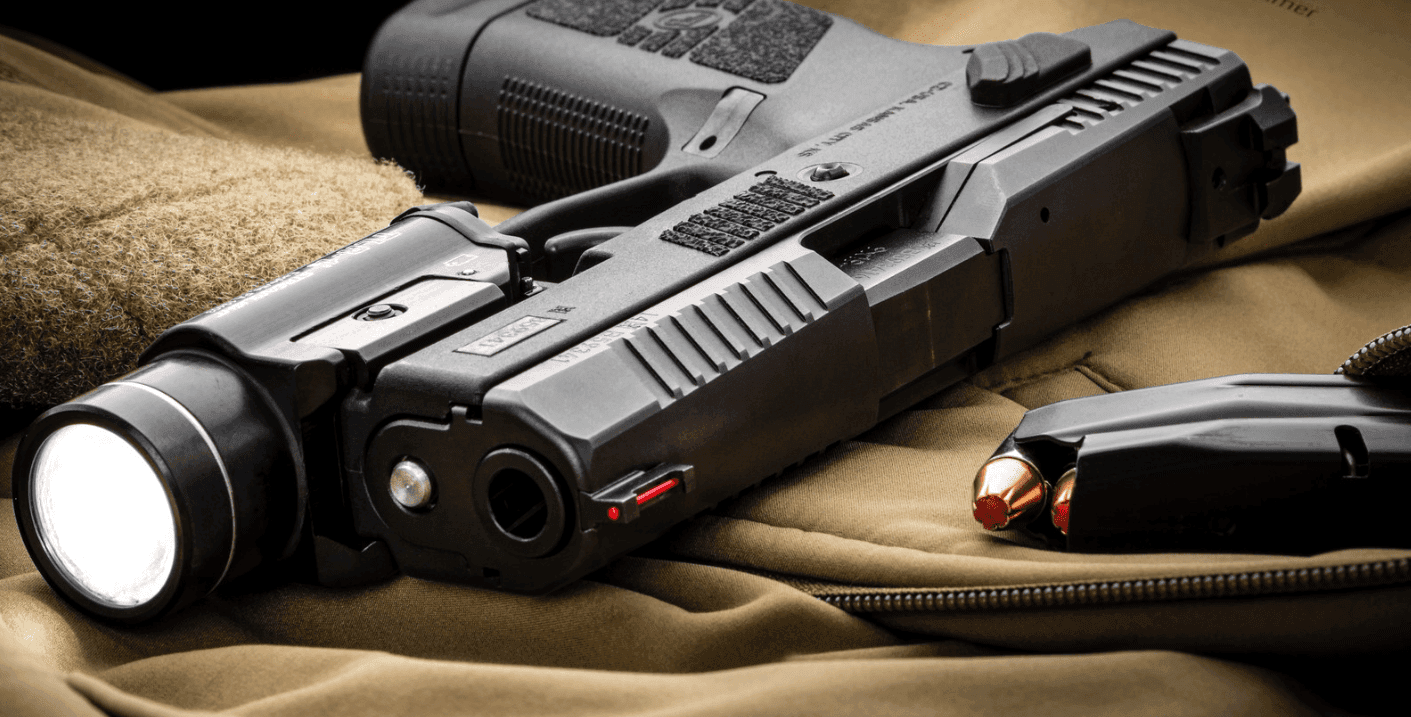Springfield Prodigy Review: A 2011 Wunderkind or More of the Same?
Is the Springfield Prodigy the best value double-stack 1911? You certainly up the capacity over standard 1911s, but is it worth the additional price?
Written By
Kenzie Fitzpatrick
Competitive Shooter
Edited By
Michael Crites
Licensed Concealed Carry Holder
Share:
Products are selected by our editors. We may earn a commission on purchases from a link. How we select gear.
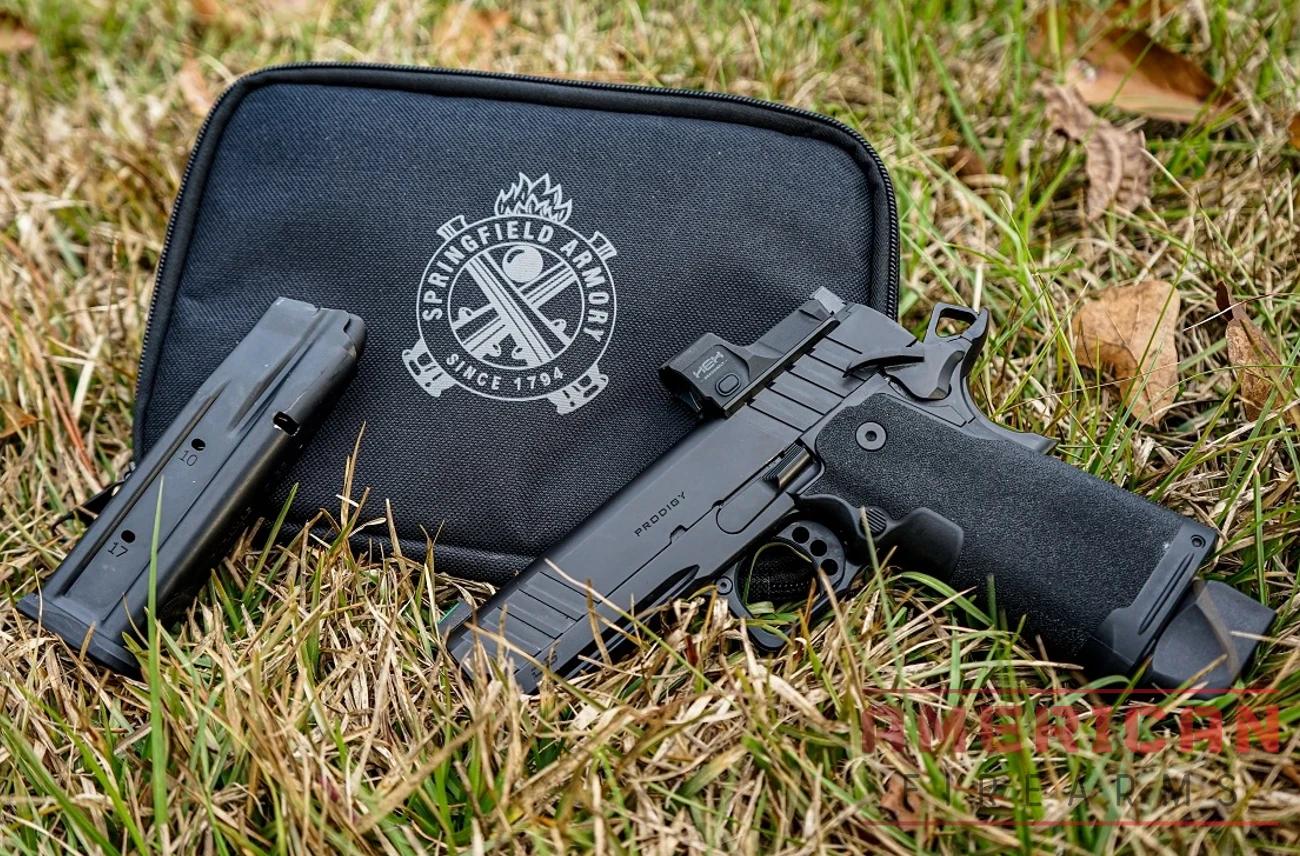
Updated
Nov 2023
Last fall, Springfield Armory announced the release of their new 1911 double-stack pistol, the Prodigy, in 5-inch and 4.25-inch versions. These pistols are squarely aimed at the 2011-style 9mm pistols used by competitive shooters and also found a market with people who traditionally carried a 1911 but wanted more capacity in a carry gun.
The price point and value offered by Springfield Armory also helped turn heads in their direction — it’s tough to find a smoother shooting pistol for the price.
In This Article
Overall Score
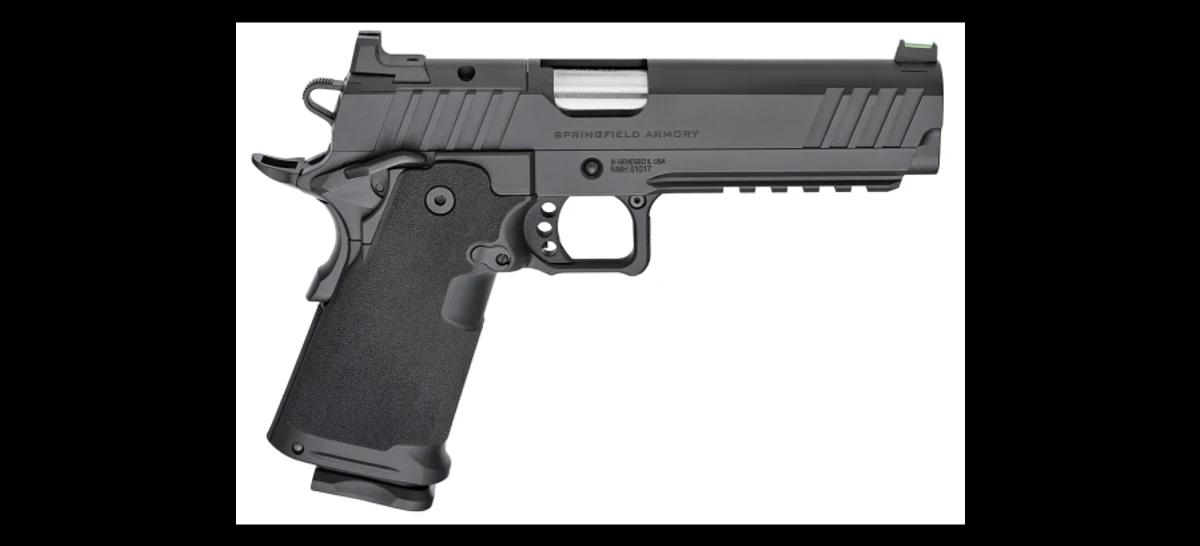
$1567.99

50
EXCEPTIONAL
Performance Scores
Best For
- Ambidextrous Controls
- Co-Witness Sights
- Higher Capacity Magazines
- Accessory Rail
Considerations
- Optic plates are expensive
- HEX Dragonfly MRD leaves a lot to be desired
- Competition offers superior quality or value
Our Verdict
When the Prodigy was first released, it was a big deal in the competition shooting world. The price point was right and the features of the gun were what 1911 enthusiasts were looking for. For the price of the gun, you can’t beat the value offered by Springfield.
You can shoot competitions with this pistol, make it an every day carry gun, or simply enjoy plinking with it on the range.
If you’re just looking for a new pistol with the 1911 functionality, with more round capacity, without breaking the bank, the Prodigy checks all the boxes.
Test Scores
So… how does the Springfield Prodigy stack up on our 60-point scale?
Accuracy: 7/10
I was surprised by the looser groups the Prodigy was producing. The 5-inch barrel performed better but really should be paired with match-grade 147-grain 9mm for top accuracy.
Ergonomics: 7/10
The Prodigy’s polymer grip impressed me with its comfort and texture although it may feel slightly large for smaller hands, but the curved trigger helps. The slide stop, however, was way too slick for competition use.
Features: 10/10
In my opinion, the Prodigy scores a perfect 10 for its customizable features, aftermarket support, and accessory compatibility.
Fit and Finish: 8/10
The Prodigy is a reliable stock firearm. It lacks custom features but you get a solid pistol and good value, especially relative to the Stacattos of the world.
Reliability: 9/10
The Prodigy handled a variety of ammunition types flawlessly, proving it could be a solid competition performer.
Value: 9/10
Given the price range of double stack 1911s, the Prodigy is very aggressively priced and a solid value.
Specifications
Caliber: | .9mm |
Barrel Length: | 5 Inch & 4.25 Inch |
Weight: | 33 oz. (5 Inch) 32.5 oz (4.25 Inch) |
Overall Length: | 8.5" (5 Inch Barrel) & 7.8 (4.25 Inch Barrel) |
Capacity: | 17 & 20 Round Magazines |
Sights: | Fiber Optic Front / Black Serrated Rear / Optional HEX Dragonfly MRD |
Frame: | Forged Carbon Steel |
MSRP: | $1,499 / $1,699 with HEX Dragonfly |
Where'd the Prodigy come from?
Double-stack 1911s are not “new” to the market but have traditionally been built by custom gun makers with a price well beyond the average gun owner’s budget. Before I started competing at a high level in shooting sports, I had never heard of STI (now, Staccato), Nighthawk Custom, Infinity Firearms, or any other gun builders building custom guns at the time. Now that Staccato has scaled up its 2011 manufacturing and established lower price points, Springfield Armory has followed suit.
“The new Prodigy 9mm, the first in our new family of 1911 double-stack pistols, takes everything that shooters love about the 1911 platform and enhances it with increased capacity and a host of performance features, said Steve Kramer, VP of Marketing for Springfield Armory, about the new platform.
“Combining cutting-edge capabilities with all the proven benefits of the 1911, the Prodigy is a must-have addition for any handgun enthusiast’s collection.”
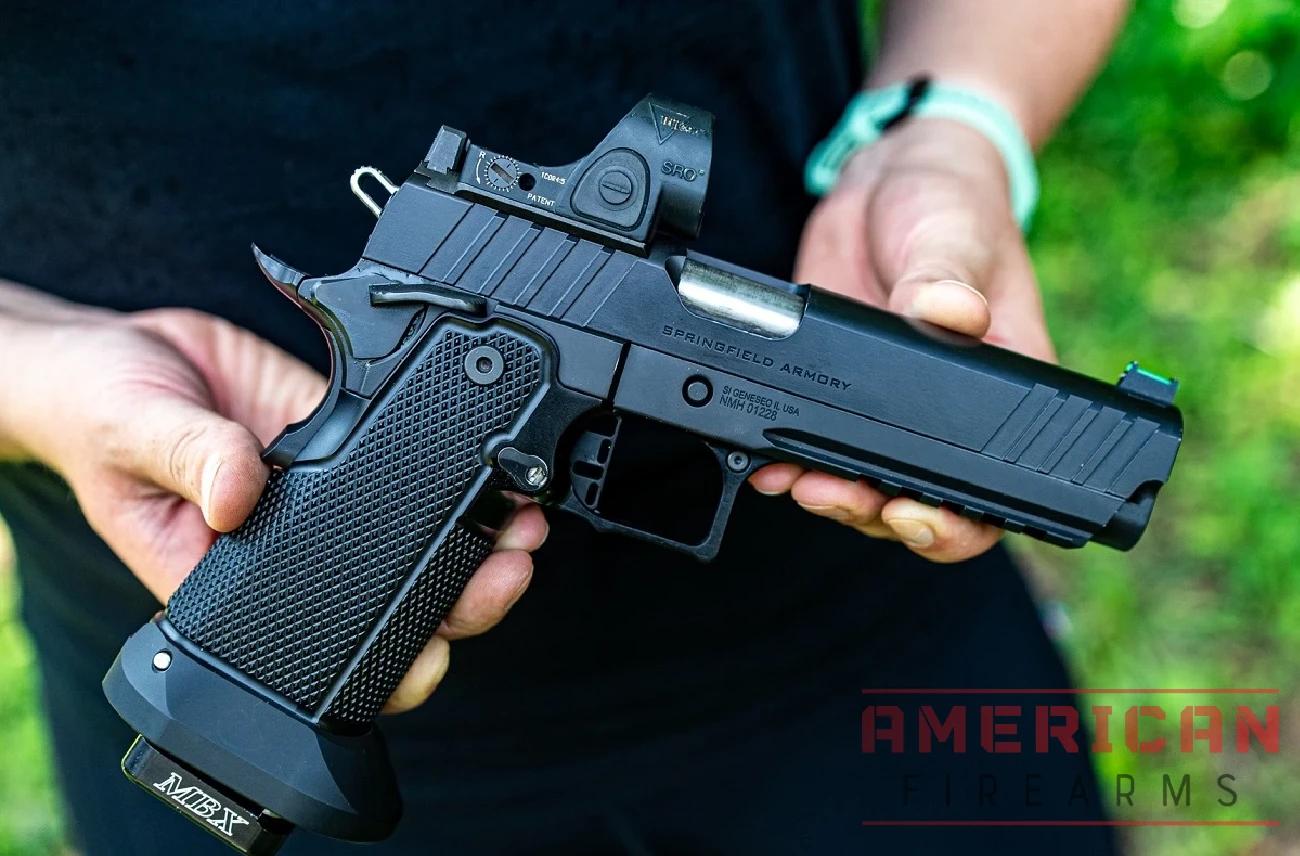
Key Features
Iron Sights vs. Red Dot
Springfield Armory released the Prodigy in the 4.25-inch and 5-inch barrel options, both available in front fiber optic and U-Notch rear sight or already outfitted with the Hex Dragonfly red dot optics.
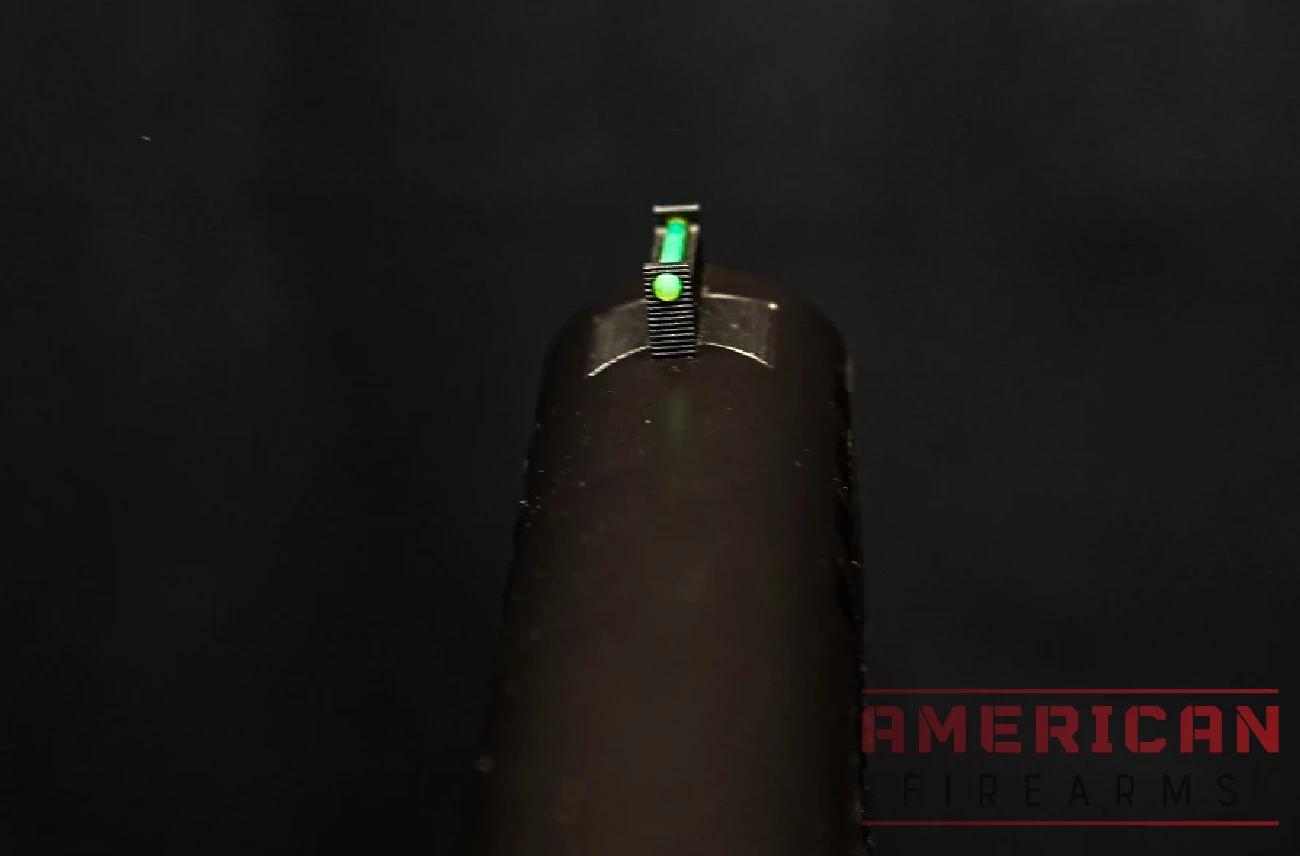
The main feature of the Prodigy pistol is that regardless of model, you have the option to run iron sights or use the AOS (Agency Optic System) to mount your favorite red dot optic on the gun.
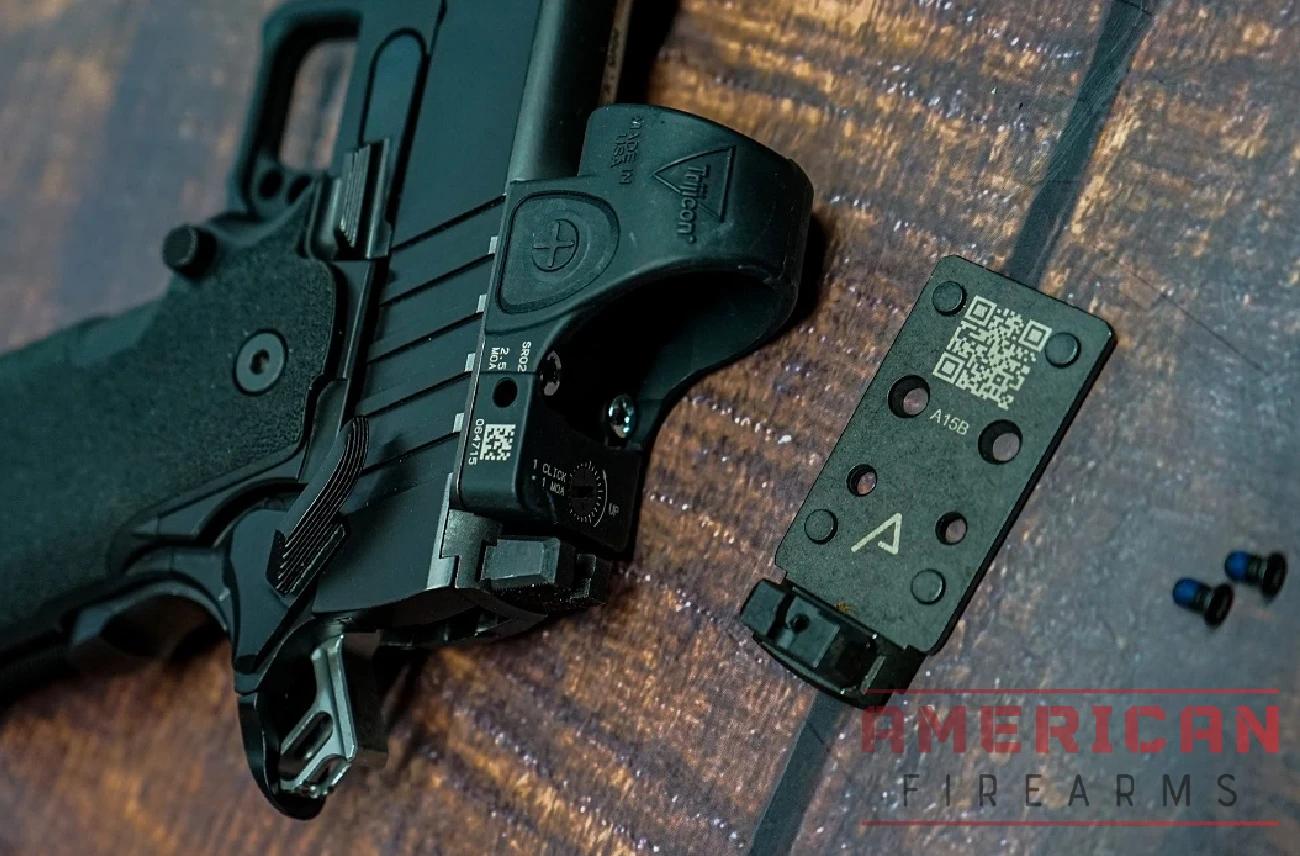
You can also have co-witness iron sights for most plates and dot options. When you purchase a red dot optic AOS plate from Springfield Prodigy, the plate is cut for specific footprints and has a built-in rear sight to the plate, so depending on the height of the optic, you would still see your iron sights through the red dot optic window.
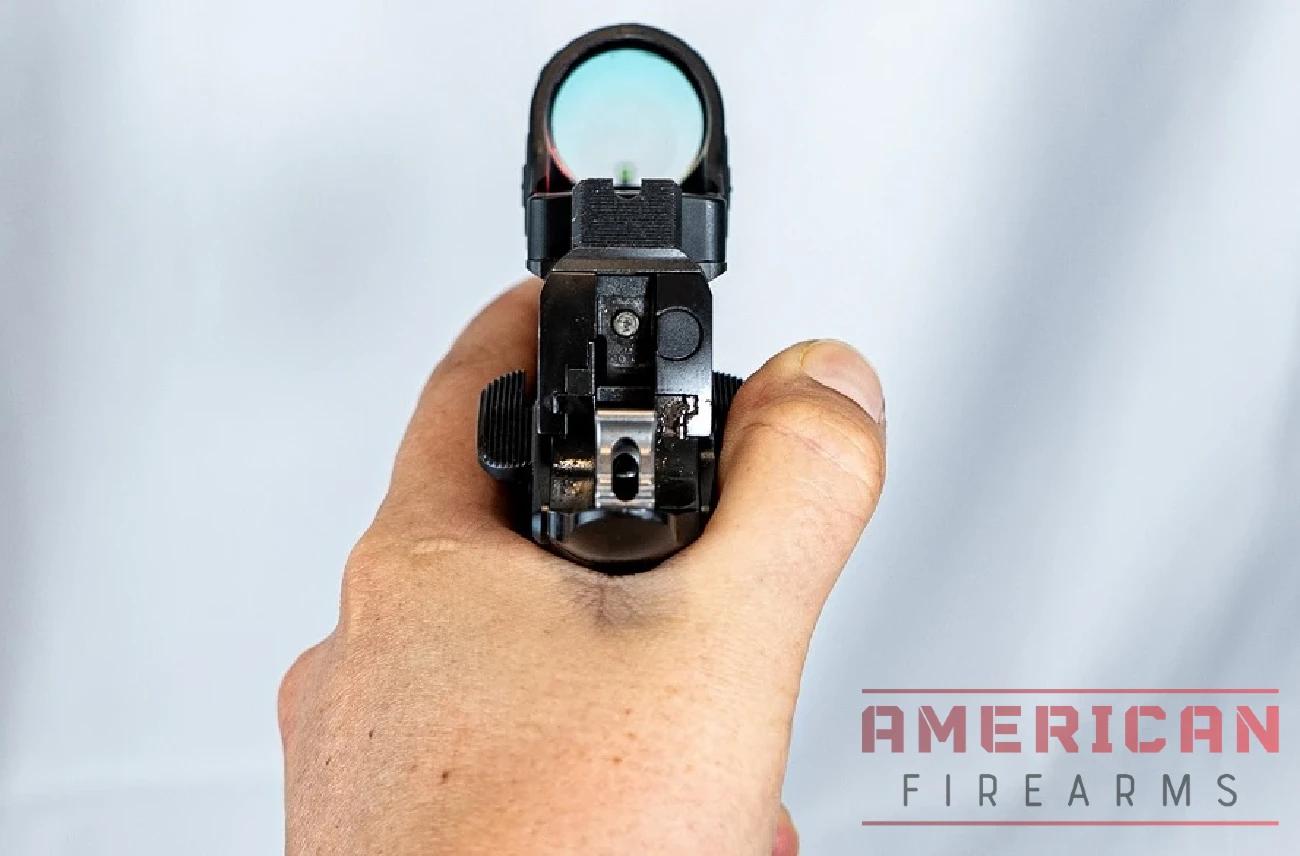
They aren’t all guaranteed to co-witness because red dot optics who share the same footprint style might not be set at the same height as one another. For example, the Trijicon RMR and SRO share a red dot optic plate footprint, but the RMR sits lower than the SRO in front of the iron sights, so it’s easier to co-witness.
Action & Trigger
Like your standard 1911 pistol, the Springfield Prodigy is a single-action pistol outfitted with a backstrap safety and ambidextrous thumb safety. The single-action trigger broke at about 4.5 pounds and has a skeletonized, curved design.
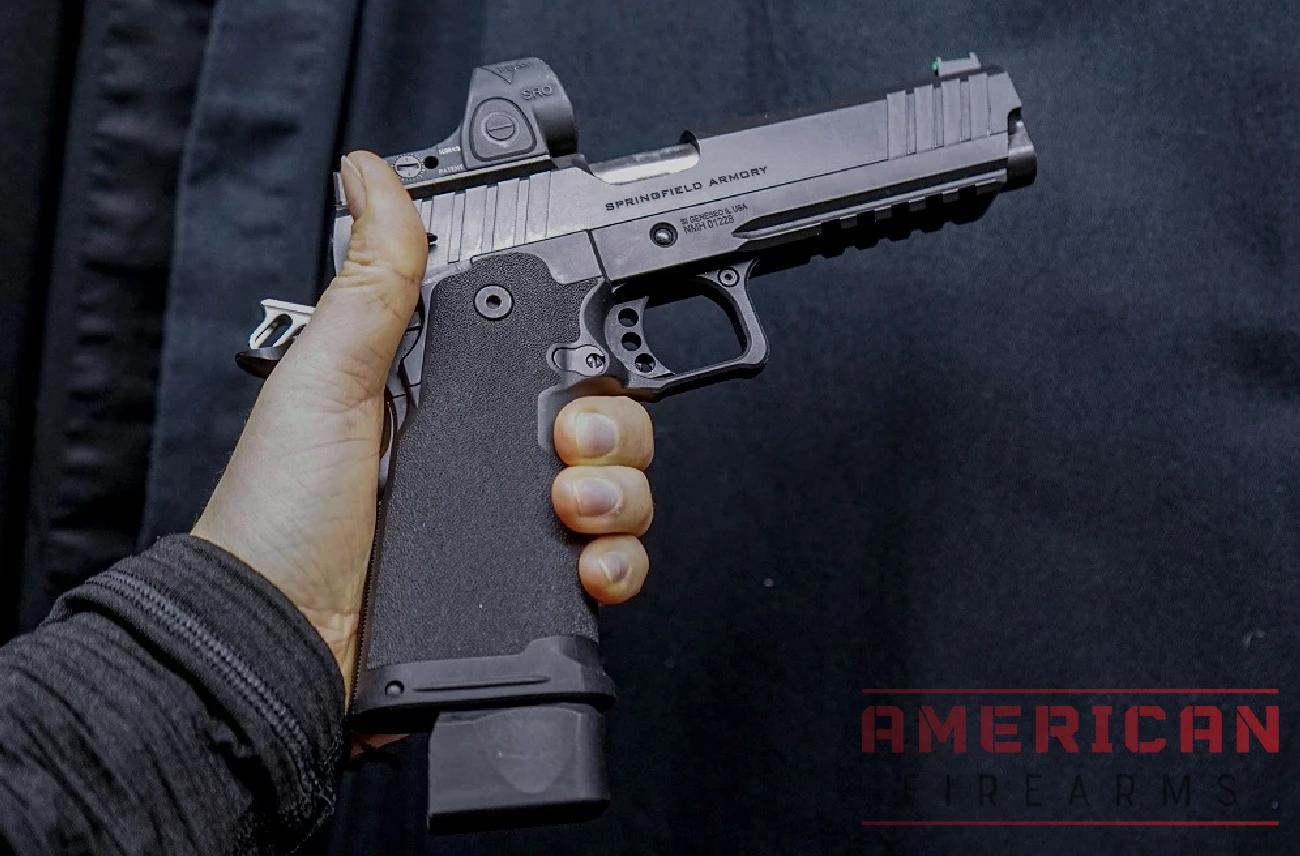
The stock trigger is great for the average gun owner, but for competitive shooters like me, it is one upgrade I made on the gun to lighten the trigger pull weight and swap out the curved trigger for a flat one.
The cut trigger guard also has a more natural grip angle to it so your middle finger on your strong hand and your index finger on your support hand should sit comfortably under the trigger guard.
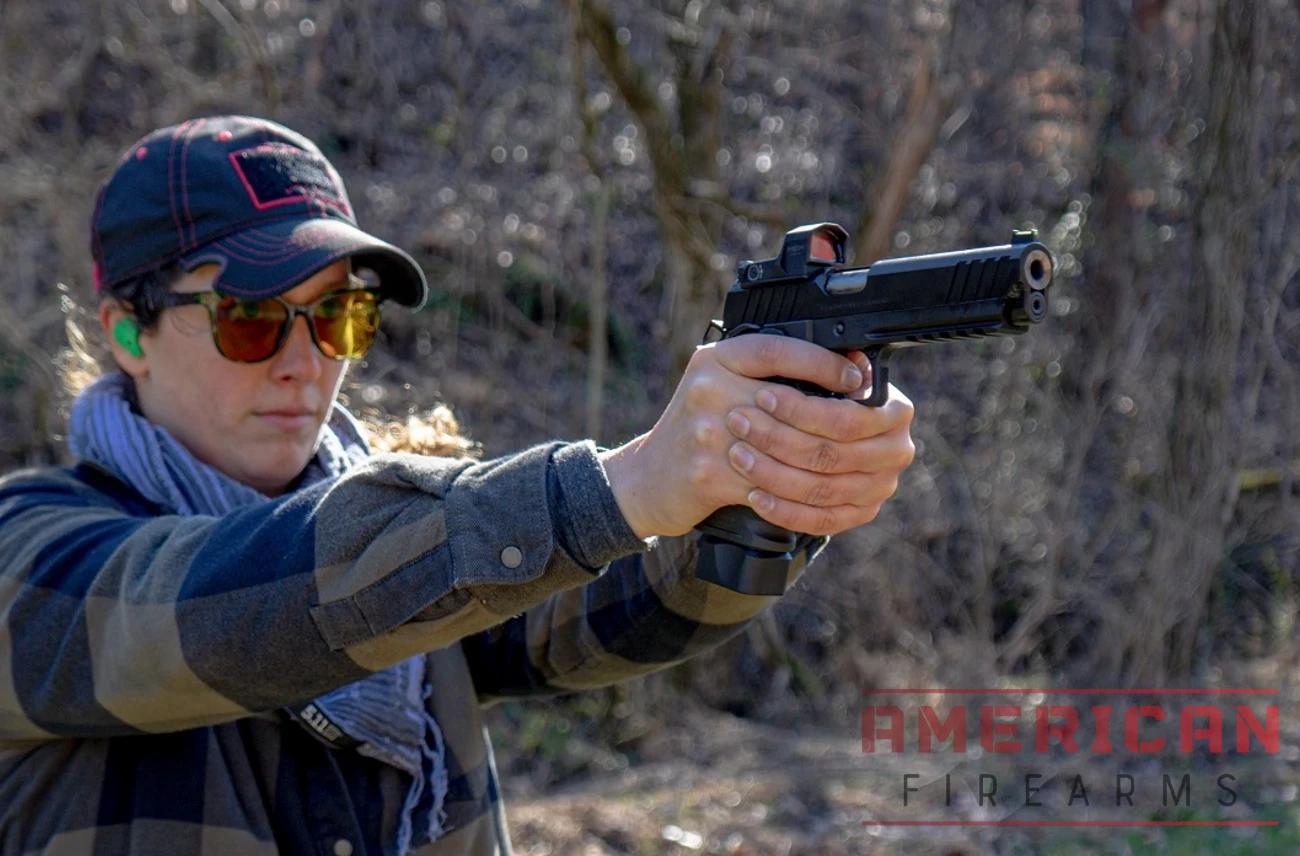
If you are familiar with striker-fired handguns like Glock, Smith & Wesson, H&K, or other popular striker-fired guns, the Prodigy single-action will be a major step up from what you are used to.
The trigger break is a little more fluid with less take-up than a striker-fired handgun, which has much more take-up before breaking once it hits a wall. The reset on the trigger is also much less than most striker-fired handguns, so follow-up shots can be much faster.
Grip and Texture
The grip on the Prodigy is unique in that it is still a polymer grip module, but it has a wraparound Adaptive Grip Texture. It almost reminds me of the Line-X spray that was in the back of my old truck bed.
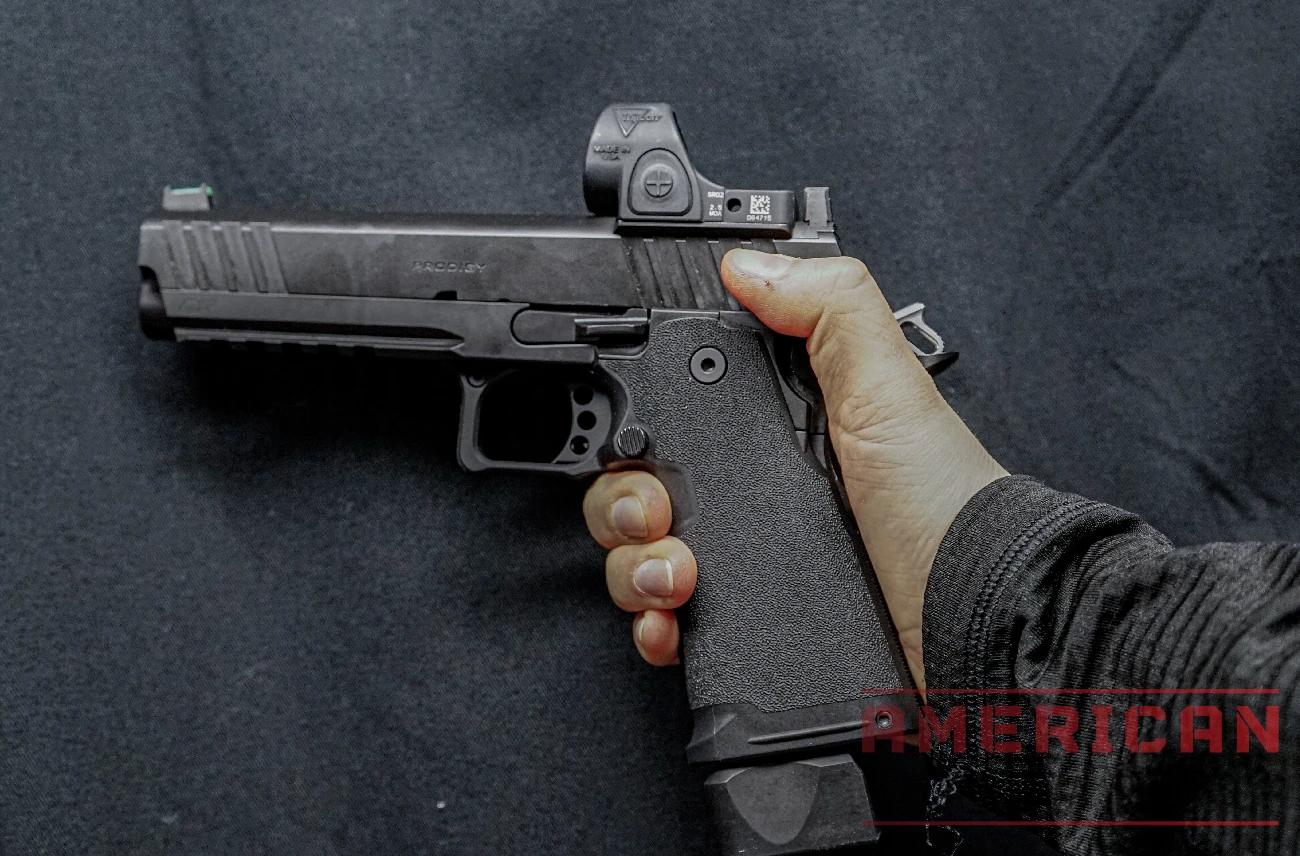
The grip texture surprised me because it is not aggressive at all but is more of a smooth texture that sticks well in the hand when shooting it. Despite the lack of aggressive marks or cut-outs on the grip, it is one of the better textures I have shot. It doesn’t even compare to any common pistol grips because it’s more of a coating than a texture.
While the grip module is mounted to a steel frame, it is more lightweight than double-stack 1911 guns because it is made of polymer. A heavy gun has less felt recoil than a lighter one.
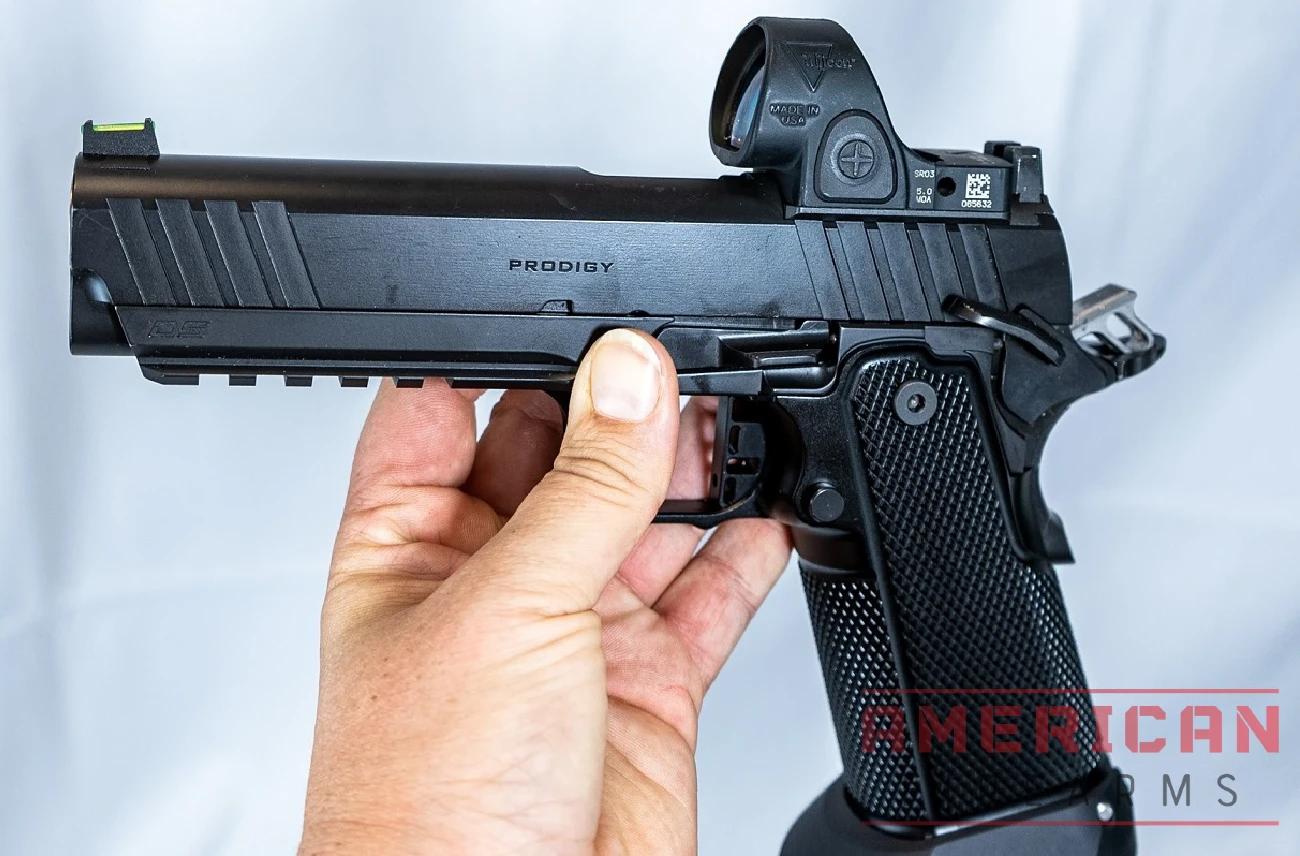
Where I think Springfield should take the 1911 DS Prodigy next is by introducing an all-steel gun with grip panels or a steel grip module. The gun balances well when it’s fully loaded but unloaded; it feels nose heavy.
Match Grade Bull Barrel
Whether you’re interested in the 4.25-inch or 5-inch barreled Prodigy, both pistols are made with bull barrels. These barrels are stainless steel with an 11-degree crown.
The accuracy always starts with the barrel of a gun, but it continues with the type of ammunition you feed it. The bull barrel is match grade and designed for making accurate shots, specifically with the competitive shooter in mind.
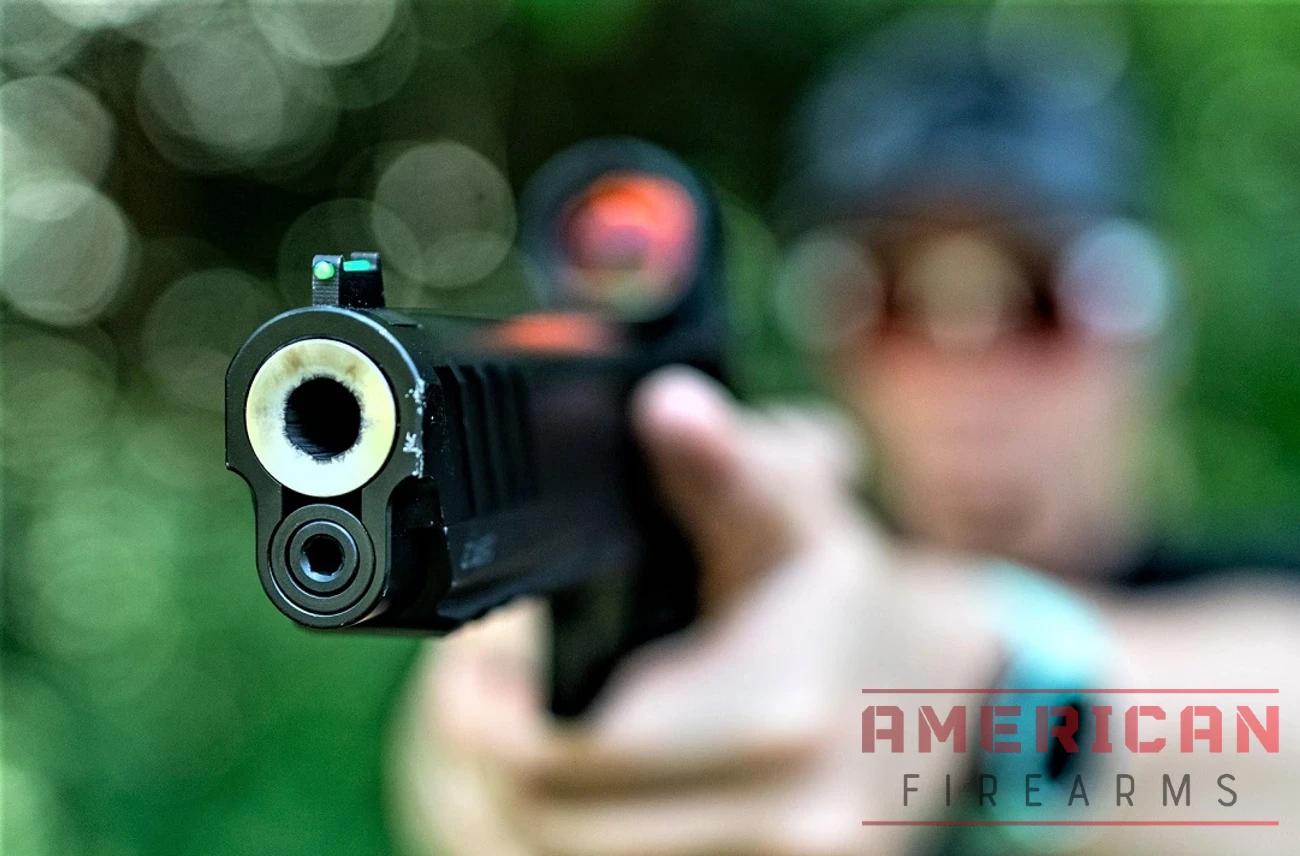
Most 2011 race guns chambered in 9mm that I’ve run prefer 147 grain 9mm and even some 124 grain. The heavier projectiles give the gun even less felt recoil and help decrease the time in between follow-up shots since your sights re-align back on target quicker.
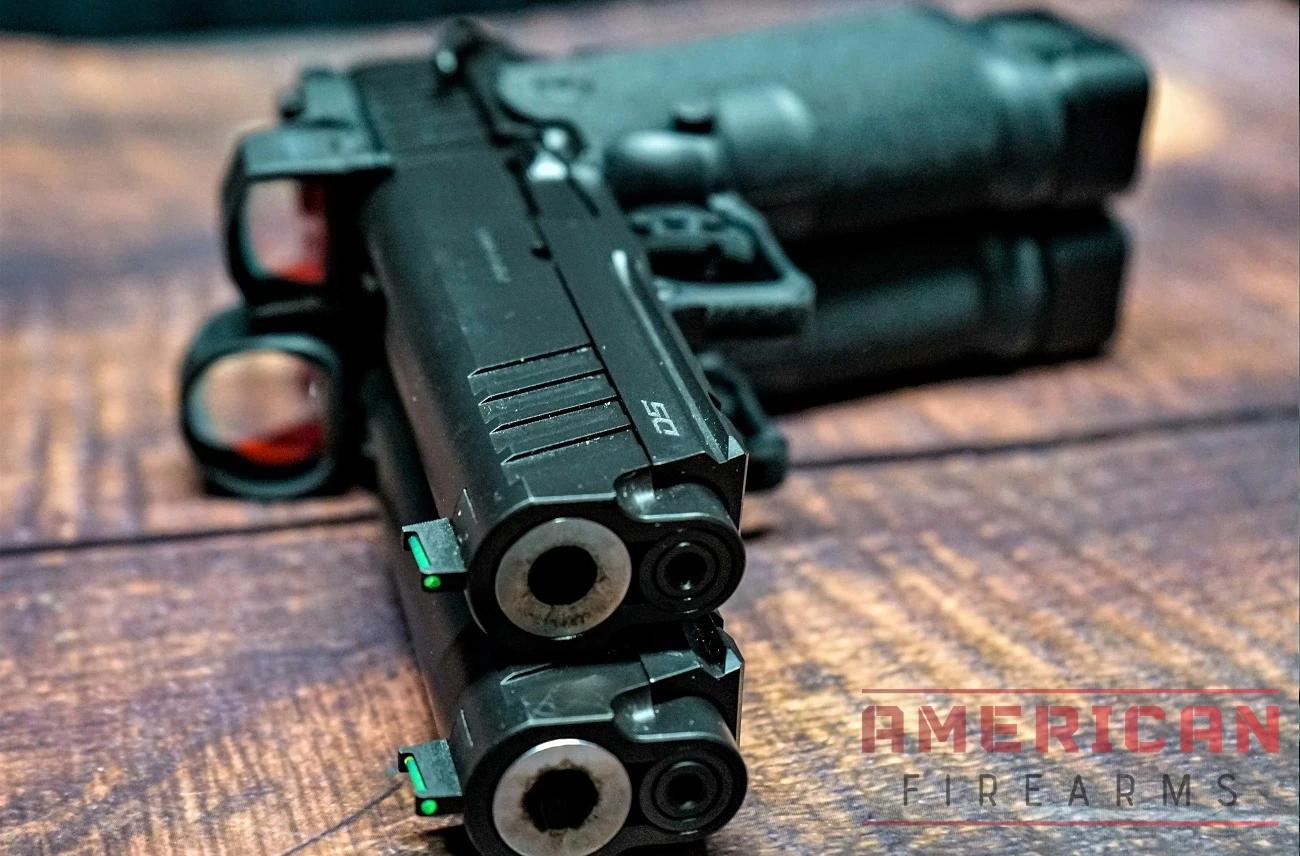
When choosing the barrel length, it’s a personal preference and a purpose decision. Some prefer the felt recoil in the longer barrel; others prefer a shorter barrel for better concealment, and others may just like a bigger gun. From an accuracy standpoint, the 5-inch barrel makes more sense for shooting competitions, but again, the choice is completely personal.
Range Time
Accuracy
No matter what ammunition I fed these pistols, the groups were not as tight as I would’ve liked them to be. At distance, the 4.25-inch barrel suffered in accuracy more than the 5-inch barreled gun, as expected.
The DS Prodigy features the match bull barrel, but the ammo test doesn’t lie. If you are looking for a competition gun specifically, the 5-inch barrel pistol is a must to get that desired accuracy from the gun.
To get the Prodigy to shoot accurately, I recommend using match-grade ammunition, 147-grain 9mm.
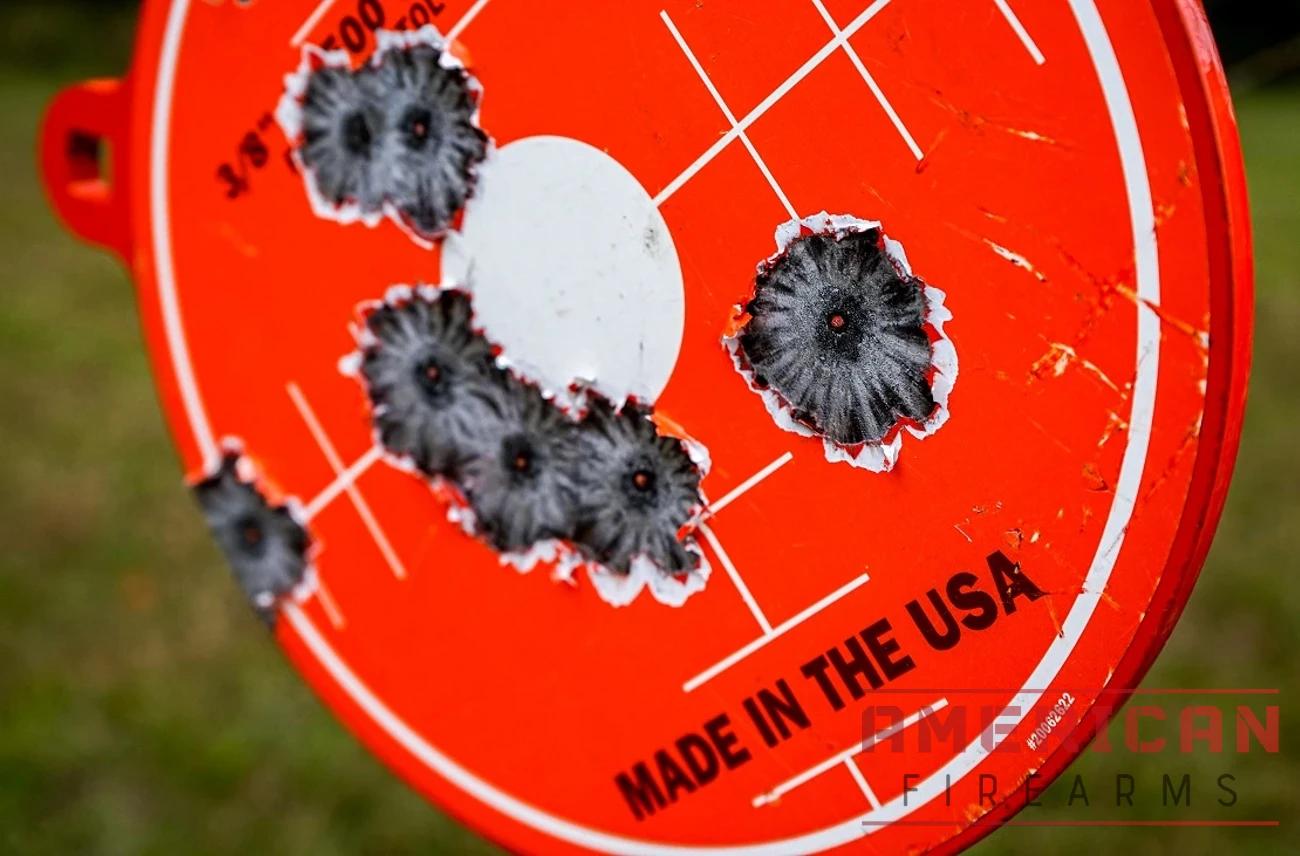
Ergonomics
The polymer grip is one of the best grips I’ve felt on a double-stack 1911 pistol. The grip angle is comfortable and the texture is not aggressive at all, but keeps the gun in your hand.
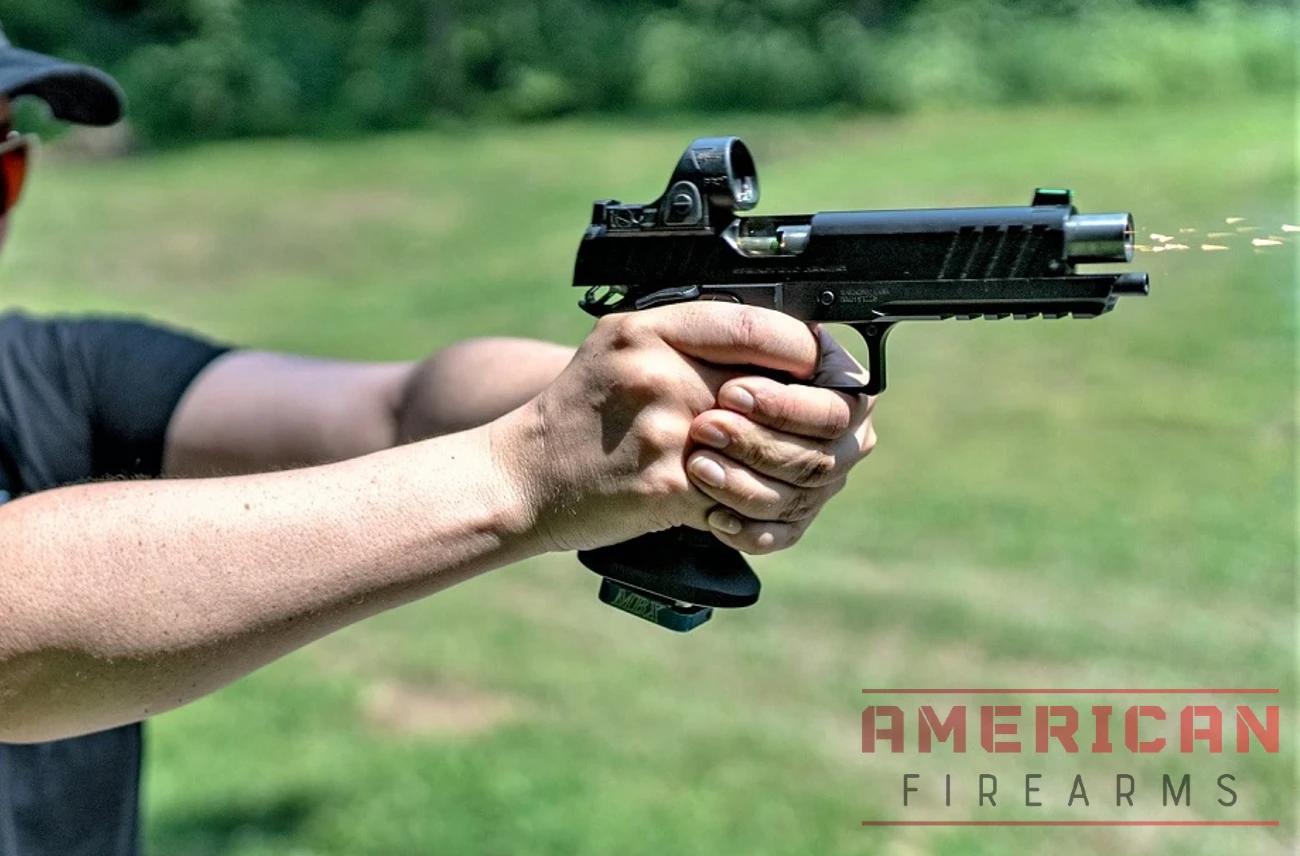
If you have small hands and are familiar with how 2011’s fit in your hand, this gun could be slightly too large to fit your hand size. The stock trigger is curved so people with shorter hands should have an easier time reaching the trigger than if it were a longer, flat trigger.
It is extremely comfortable for both right and left-handed shooters thanks to the ambidextrous safety.
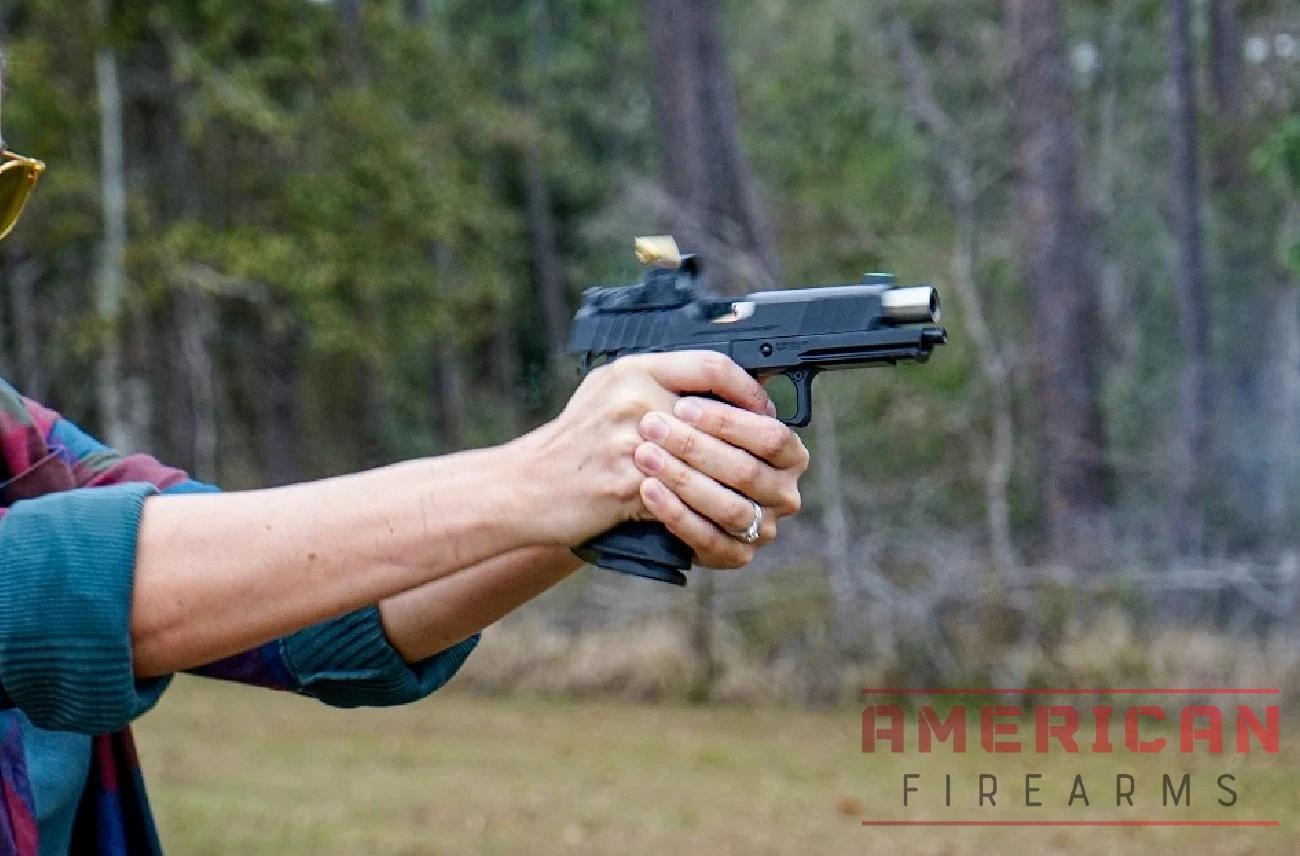
The Prodigy is also outfitted with forward cocking serrations. These serrations make racking the gun easy, especially if you mount a red dot optic to the pistol and need to rack the gun closer to the muzzle. These serrations also help if you shoot with gloves on.
Features
In terms of the features of the gun, the ability to customize the Prodigy, and aftermarket support, I’d rate the gun at a 10. Holsters are easy to find and fit most double-stack 1911 pistols.
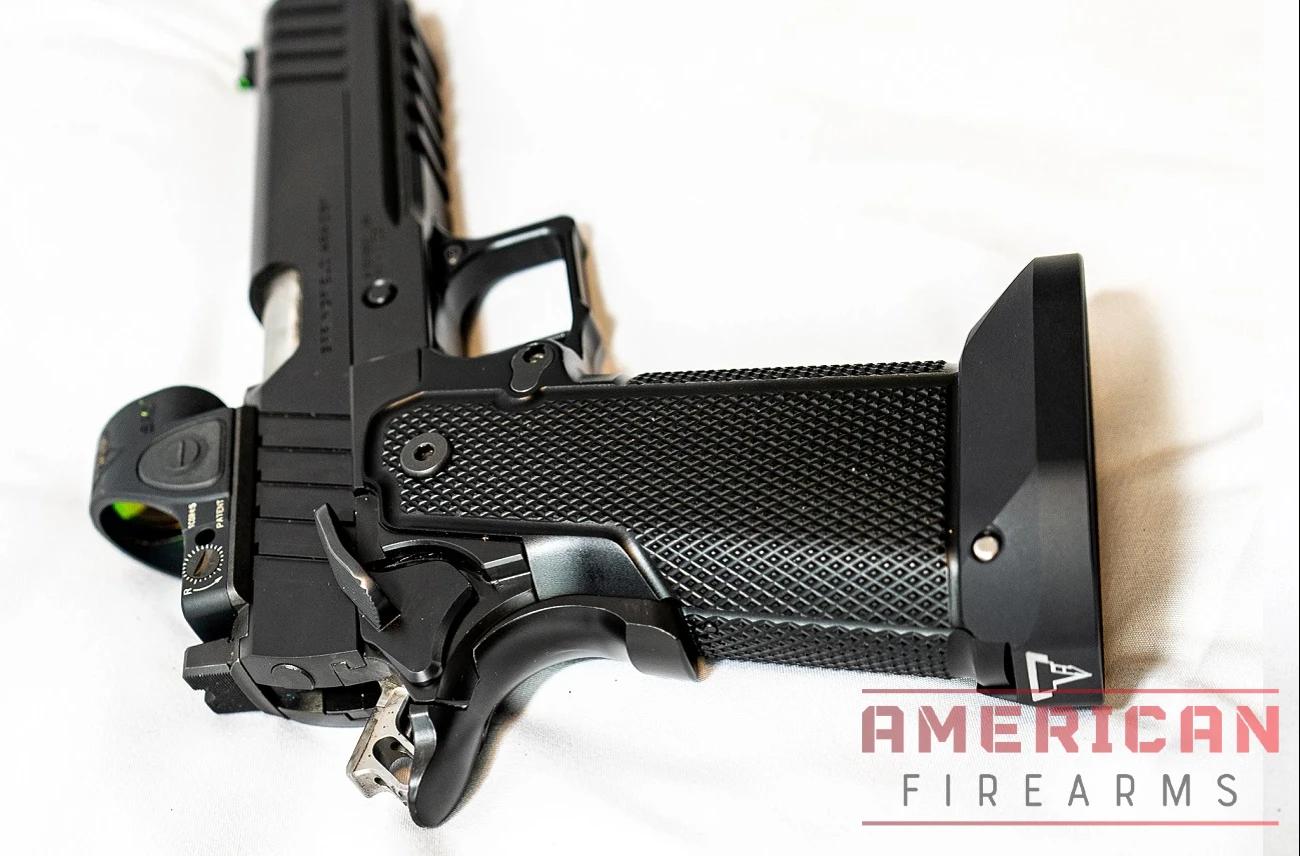
The Prodigy allows most popular micro red dot optics to be mounted with the proper AOS plate. The Picatinny rail allows you to attach a light or laser to the gun. I also tested the Prodigy with aftermarket MBX magazines and they ran flawlessly through the gun as well.
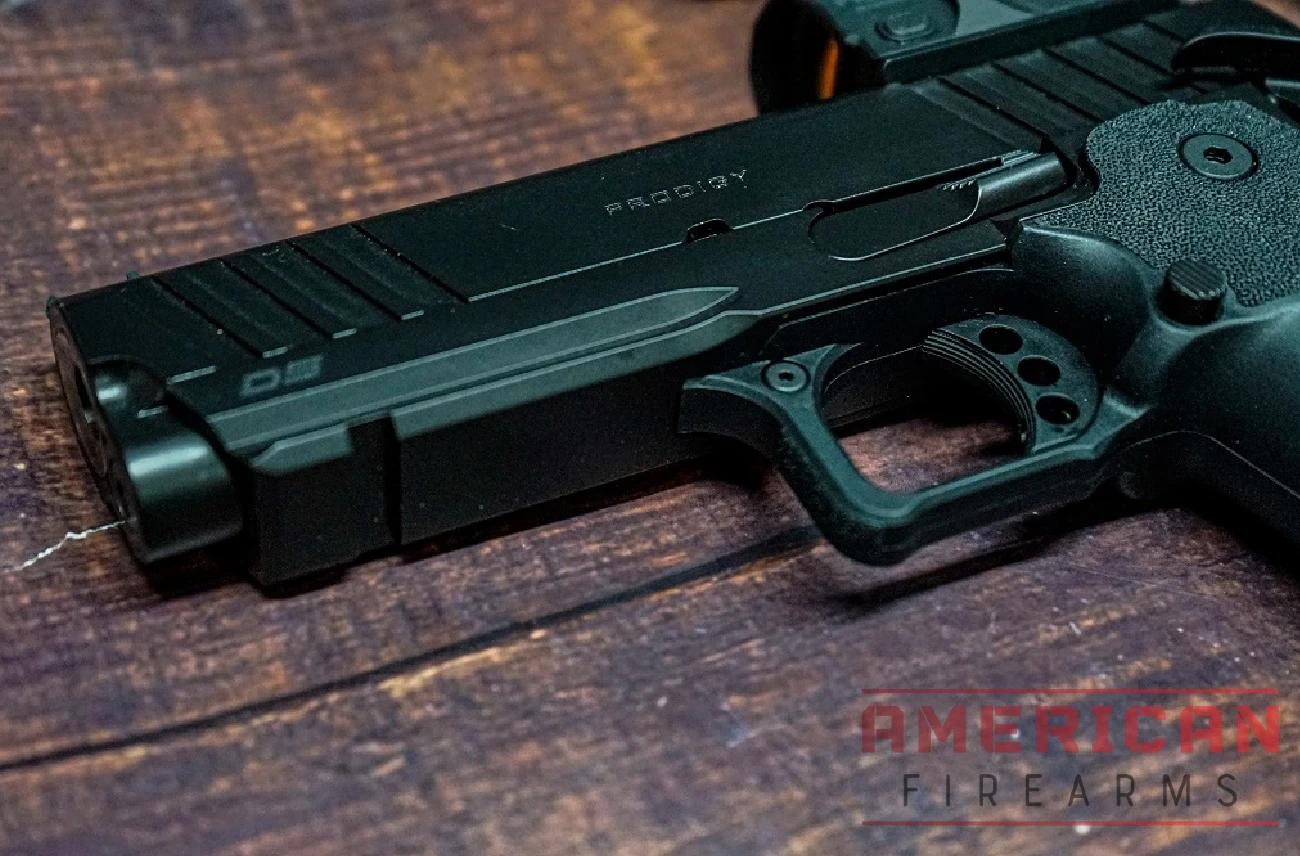
And as far as aftermarket support, I swapped the polymer grip for an aluminum grip module on the Prodigy’s forged steel receiver. I changed the trigger to a short, flat Red Dirt USA trigger. And I added a large mag well to the gun as well, so it truly can be as customized as you want.
Fit & Finish
The Prodigy isn’t a custom gun by any means. This is a factory-produced firearm that includes what it includes — no modifications or upgrades. There isn’t “craftsmanship” in my opinion to an assembly line pistol. The construction of the firearms itself does seem durable and solid. The pieces fit together correctly and with the price point, are a good value.
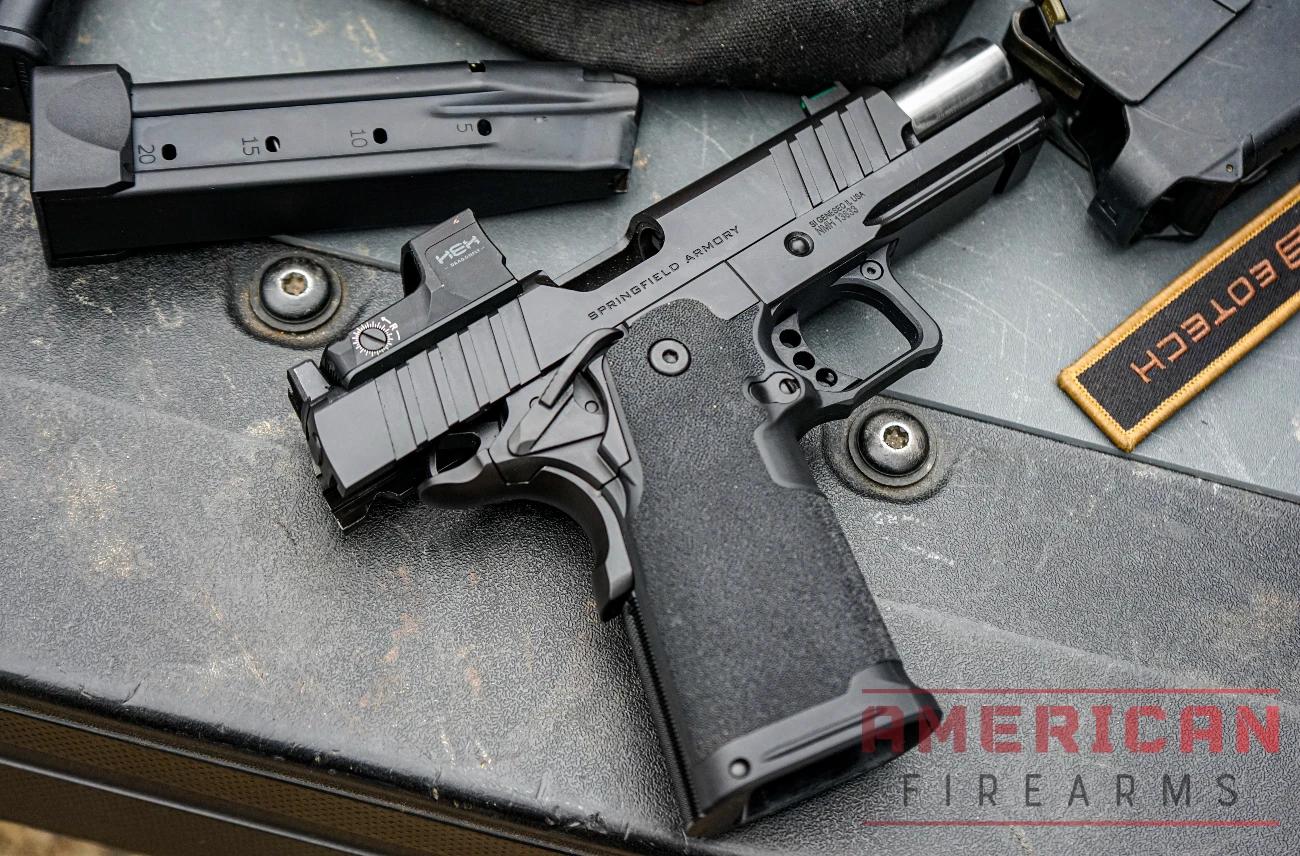
Reliability
The Prodigy is extremely reliable with a multitude of ammunition. Bullet profiles didn’t matter when it came to functioning properly. I easily ran hollow points, full metal jackets, and both coated and non-coated bullets through the gun just fine. The feed ramp seems to be what makes this gun successful in feeding different bullet profiles.
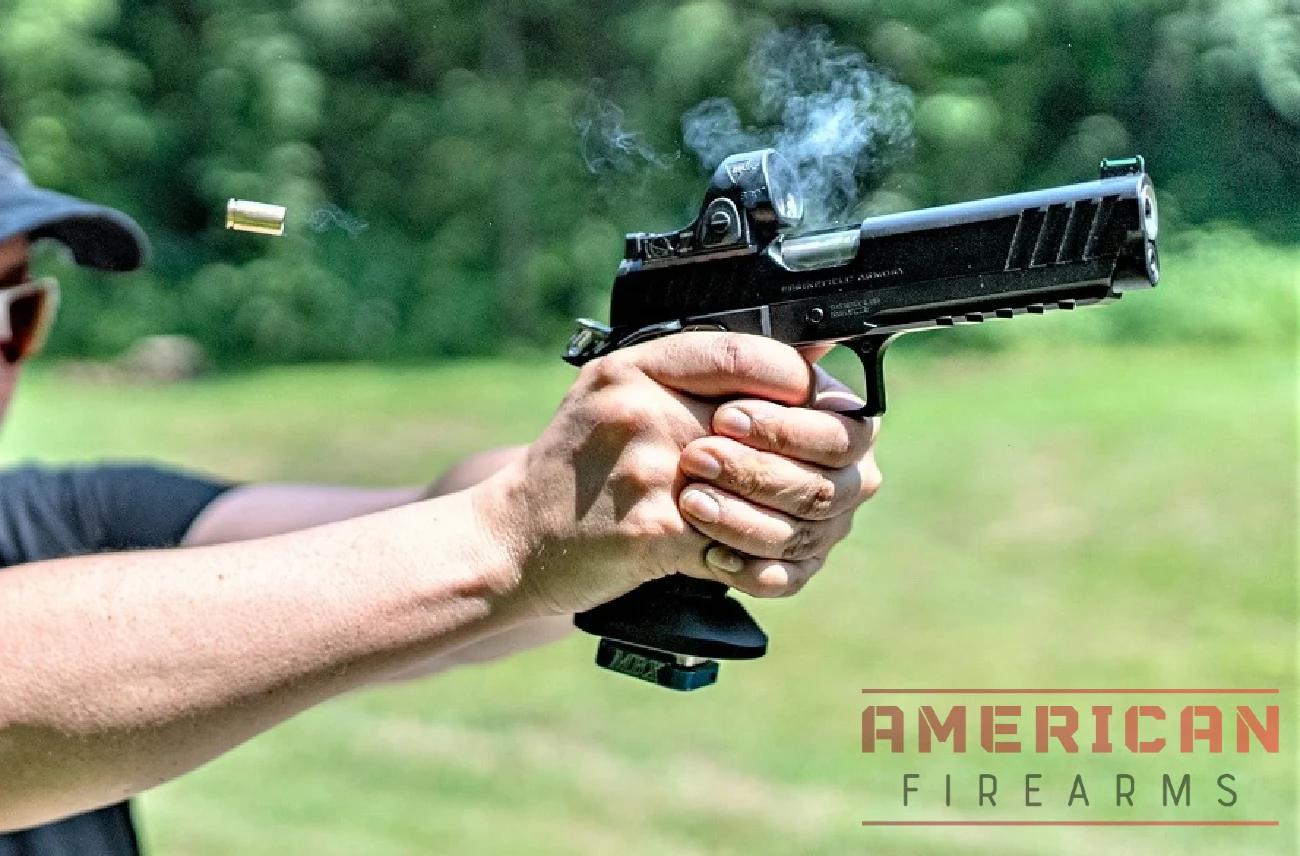
Be sure to keep the feed ramp clean and polished between range sessions. The reliability of this gun was important to be to know if it would be a solid performer or not in competition, and it did not disappoint.
Value
The one gun that is most comparable to the Springfield Prodigy is the Staccato P, even though they aren’t quite the same gun.
The Staccato P is a steel-framed gun that’s optics-ready, with a 4.4-inch bull barrel, and ambidextrous safety. The price tag on the Staccato without an optic is $2,499 vs. the Prodigy which, without an optic, is a full thousand less at $1,499. The value offered in the Prodigy is worth it especially when you start comparing price points of other double stack 9mm pistols on the market.
Upgrades
By now, if you’ve read any of my articles, you’ve probably noticed a trend that I like custom guns and modifying my guns to fit my needs. The Prodigy is no different. I knew that I wanted to trick it out into a more competitive pistol for the Limited Optics Division in USPSA.
I still think the stock pistol adds much value, but I want the most race-optimized pistol I can create. Here are the parts and components I used to make the Prodigy race ready:
Phoenix Trinity Hero Grip
The Prodigy comes with a polymer grip module with good texture, but the first upgrade I knew I wanted to make was switching to the Hero Grip module by Phoenix Trinity. This module is made from aerospace grade 7075 aluminum and is made to be extremely durable. The Prodigy has a forged steel frame, so the weight distribution still feels well-balanced.
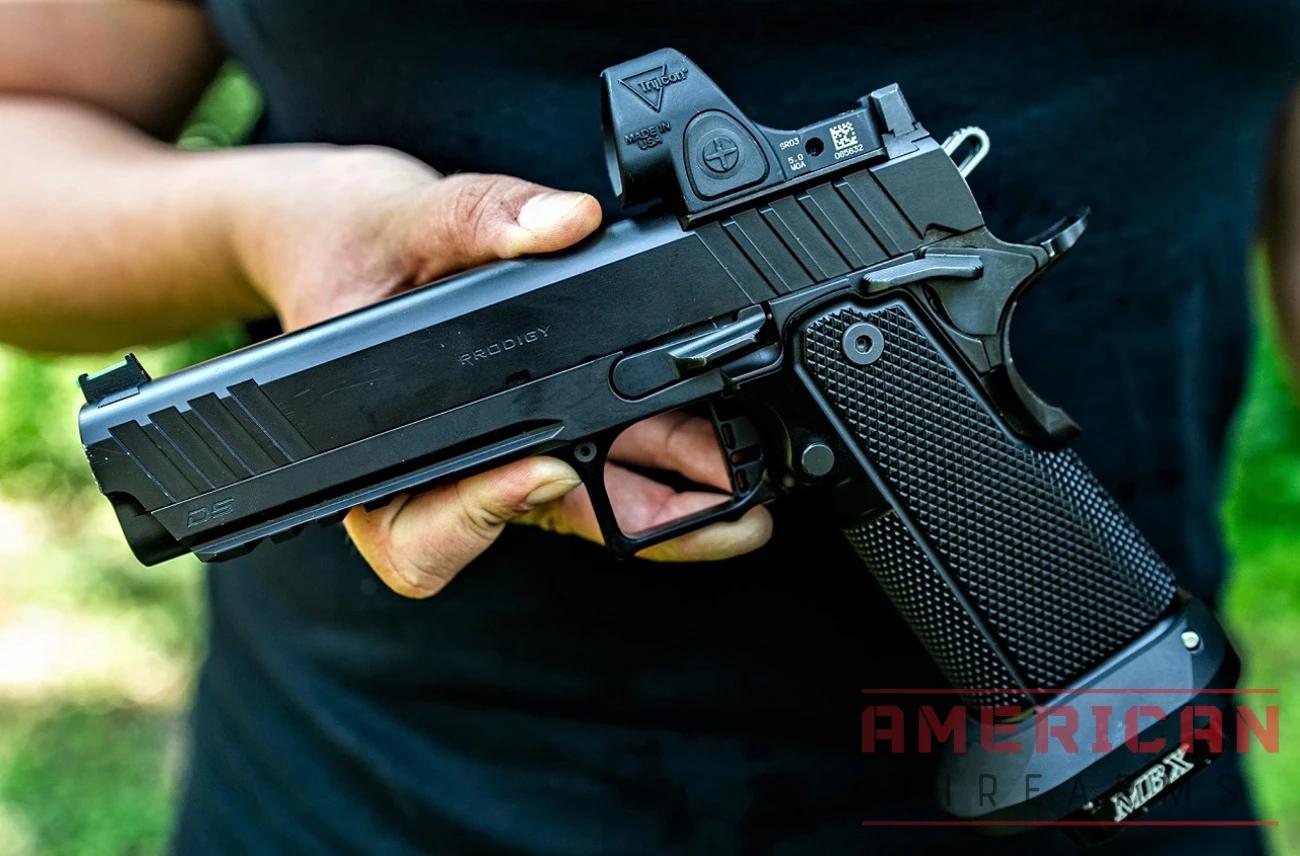
As a 3 Gunner, I know I want a grip module that can keep up with the paces in and out of holsters and thrown into dump barrels. The texture on this grip module is perfect, in my opinion. It’s smooth enough that it won’t snag on clothing but gives you a solid grip in the hand, whether it’s slick or raining. This grip module also allows you to make the grip safety functional or non-functioning just by changing the mainspring housing.
Taran Tactical Flared Magwell
Just about all of my competition pistols (if the division allows) have a flared mag well. These make it so much easier to reload fast, especially when you’re under the pressure of the timer. The Taran Tactical Grandmaster mag well isn’t just helpful in reloading; it also looks super good on this all-black pistol.
EGW Internal Parts
The biggest flaw of the Springfield Prodigy pistol is the stock slide stop. It sits too flush with the frame of the gun that it’s next to impossible to push up to lock the slide back.
The best upgrade I immediately made to the Prodigy is installing the EGW Prodigy slide stop with a wider “shelf” to allow your thumb to push up or down on the slide stop easily. The EGW 1911 ignition kit with the lightened hammer also made a big difference in the performance of the Prodigy.
And finally, the EGW guide rod kit makes it easier to disassemble and reassemble and easily drops into the gun. You can also upgrade to an oversized firing pin and change the recoil spring to tune the gun to the ammunition you plan to shoot out of it.
FAQs
Is the Springfield Prodigy a good gun?
Is the Springfield Prodigy accurate?
What calibers does the Springfield Prodigy come in?
What is the MSRP of a Springfield Prodigy?
Sign up for our newsletter
Get discounts from top brands and our latest reviews!




